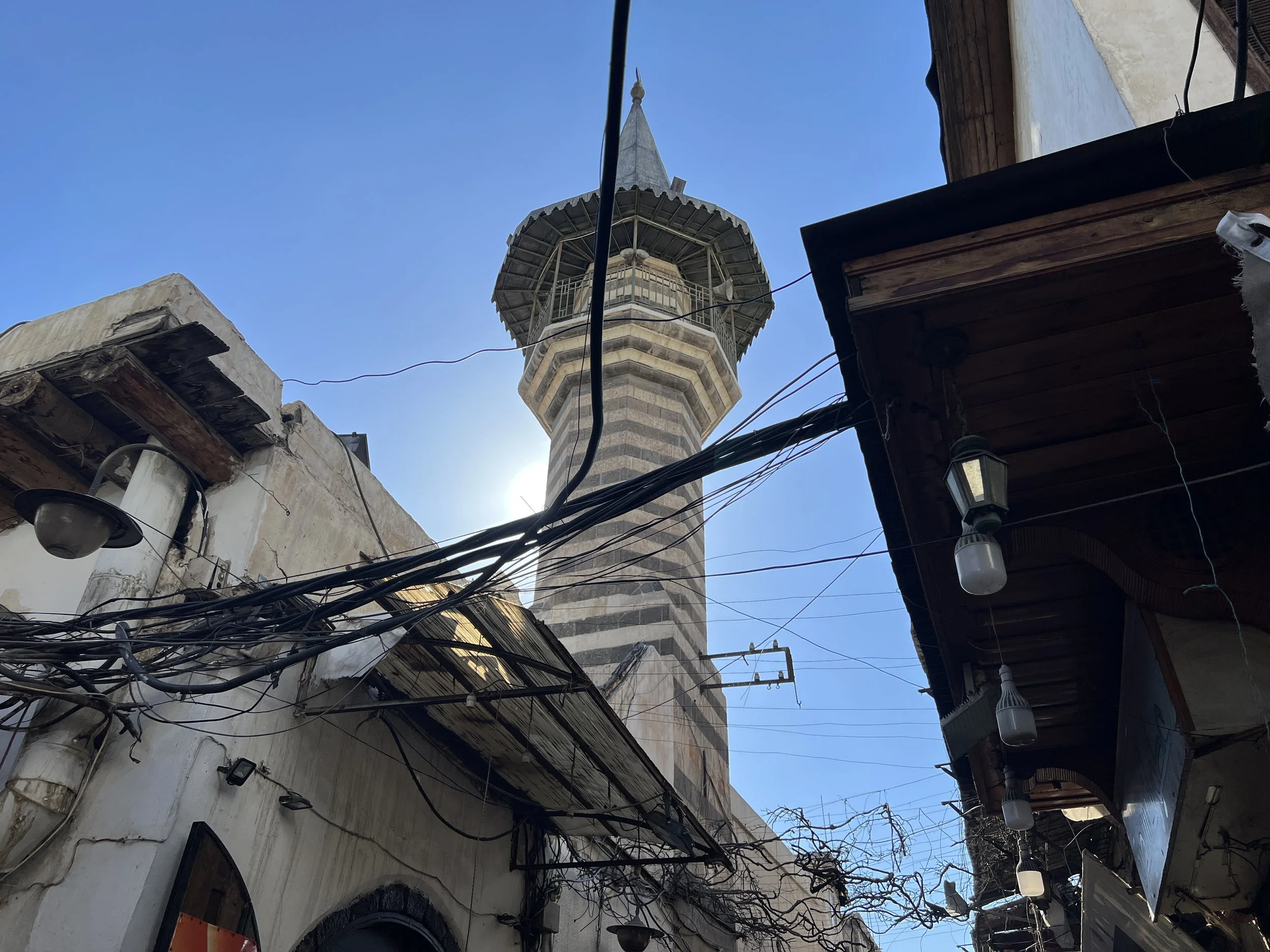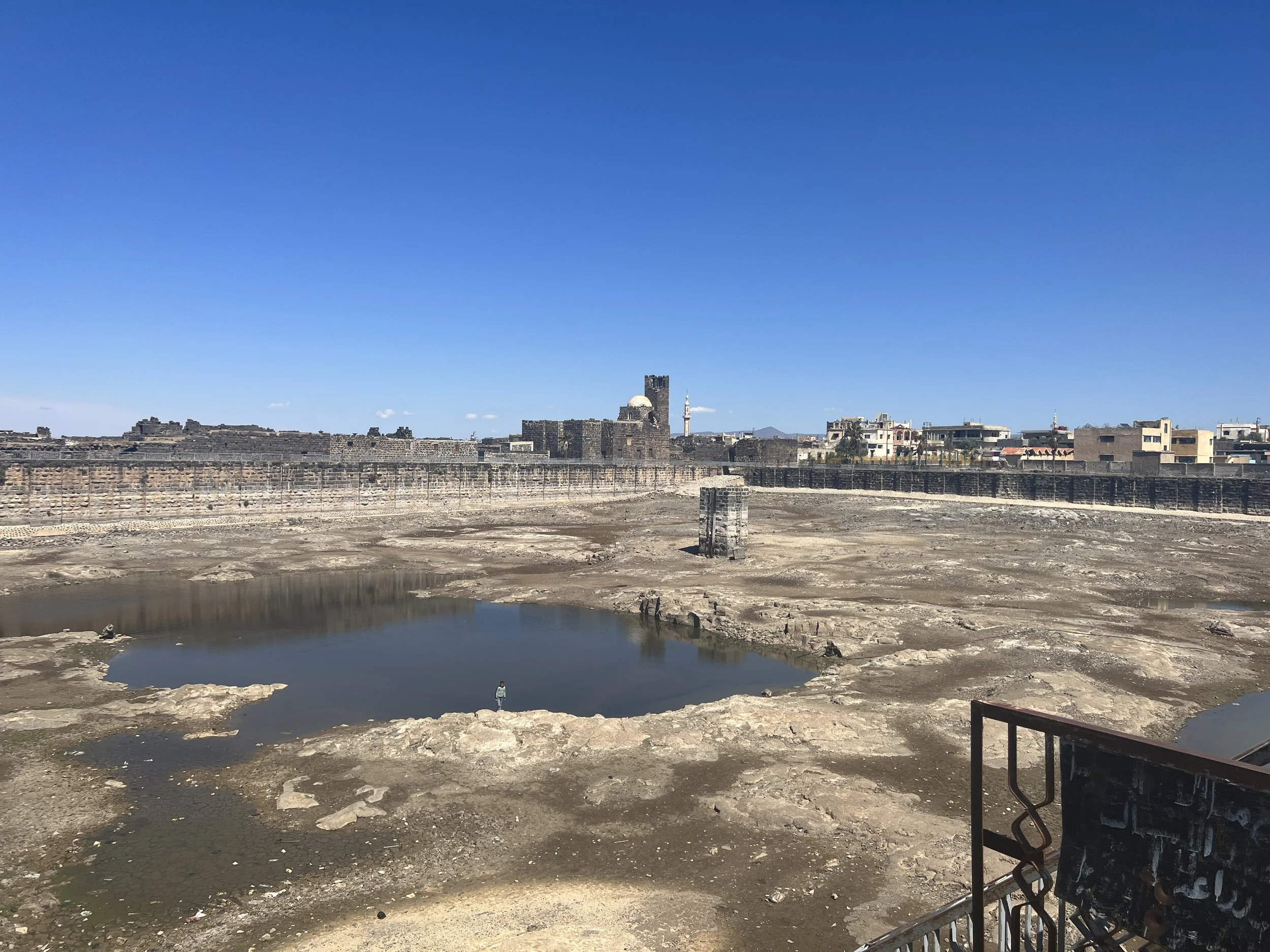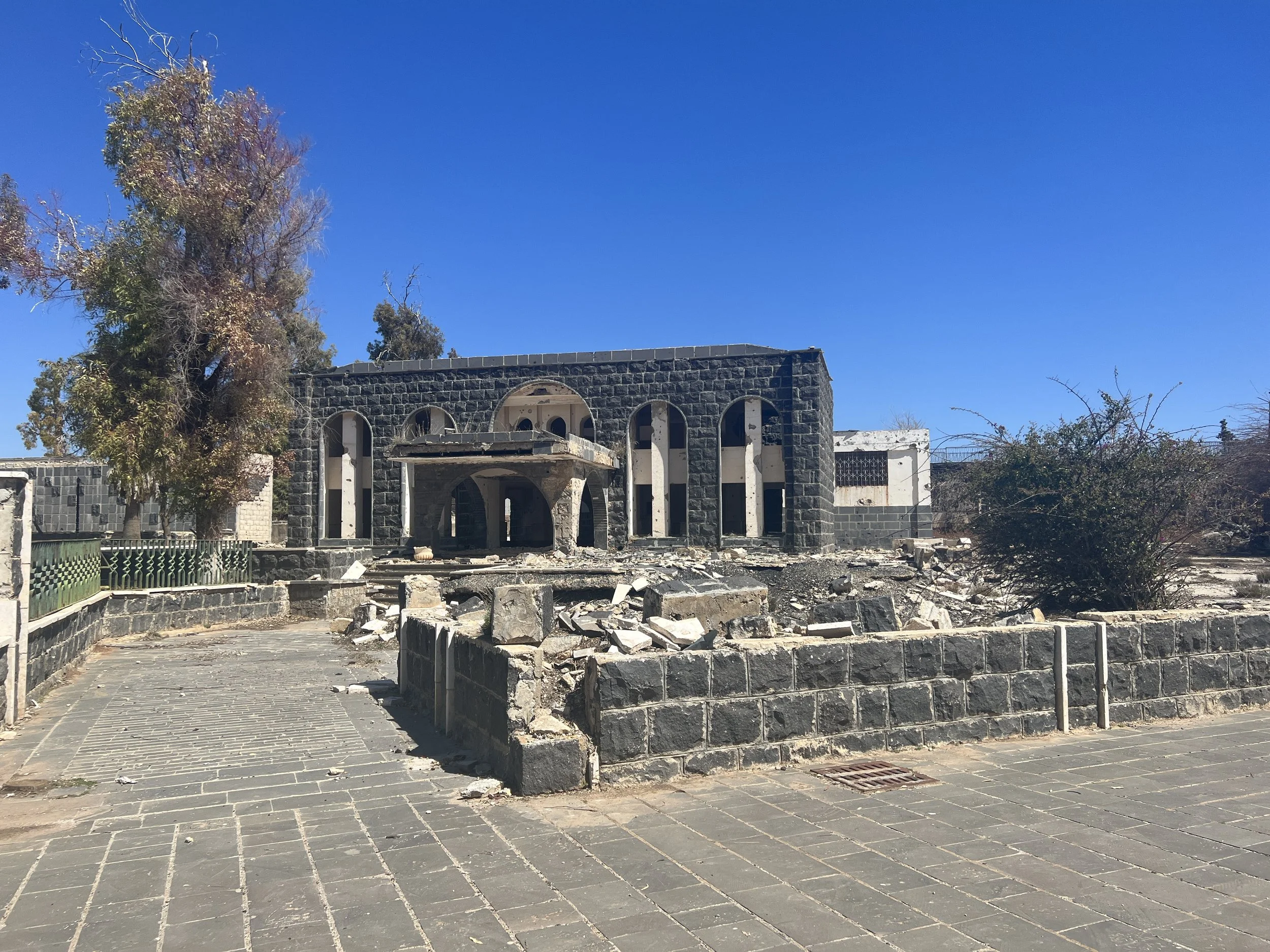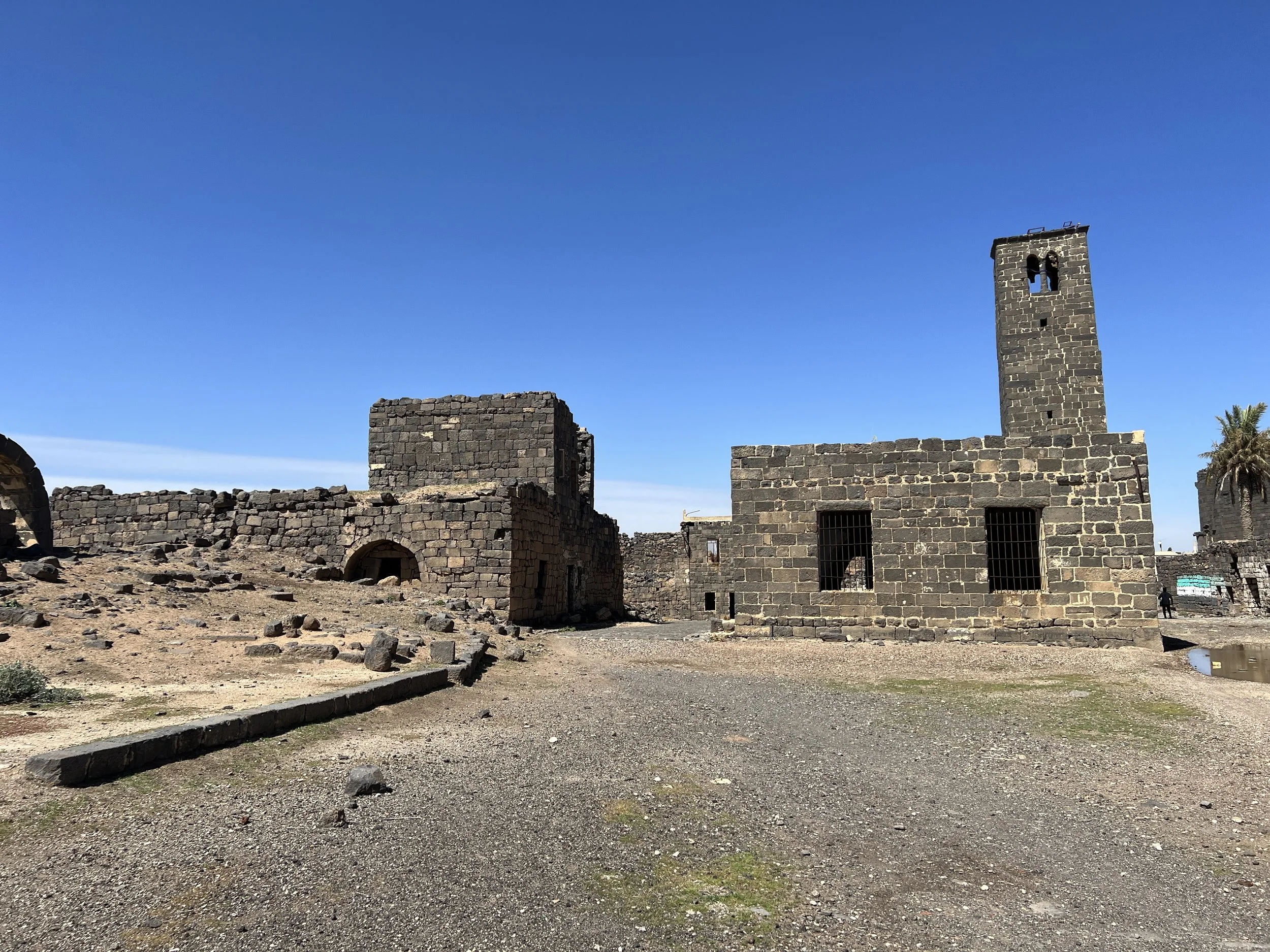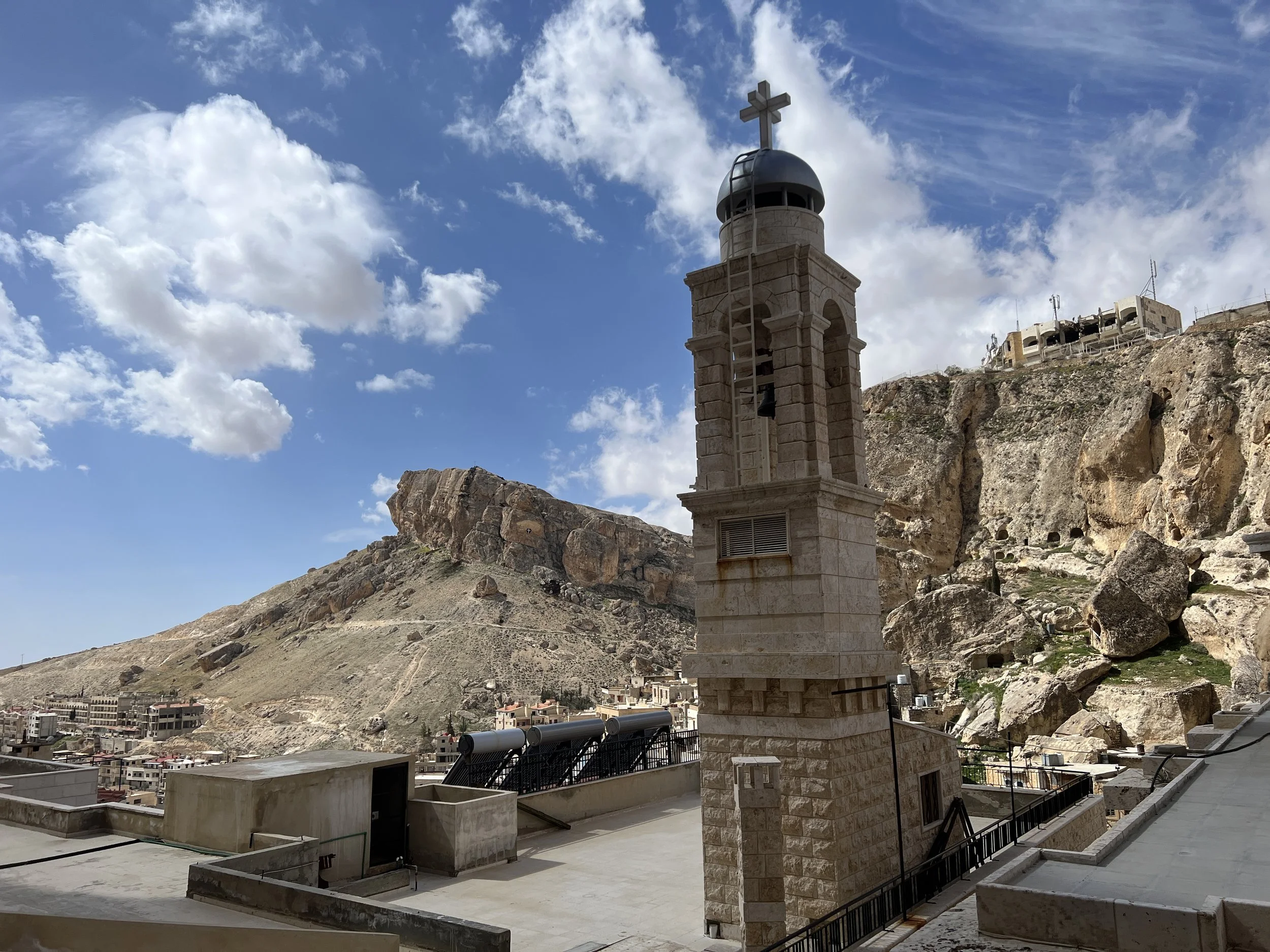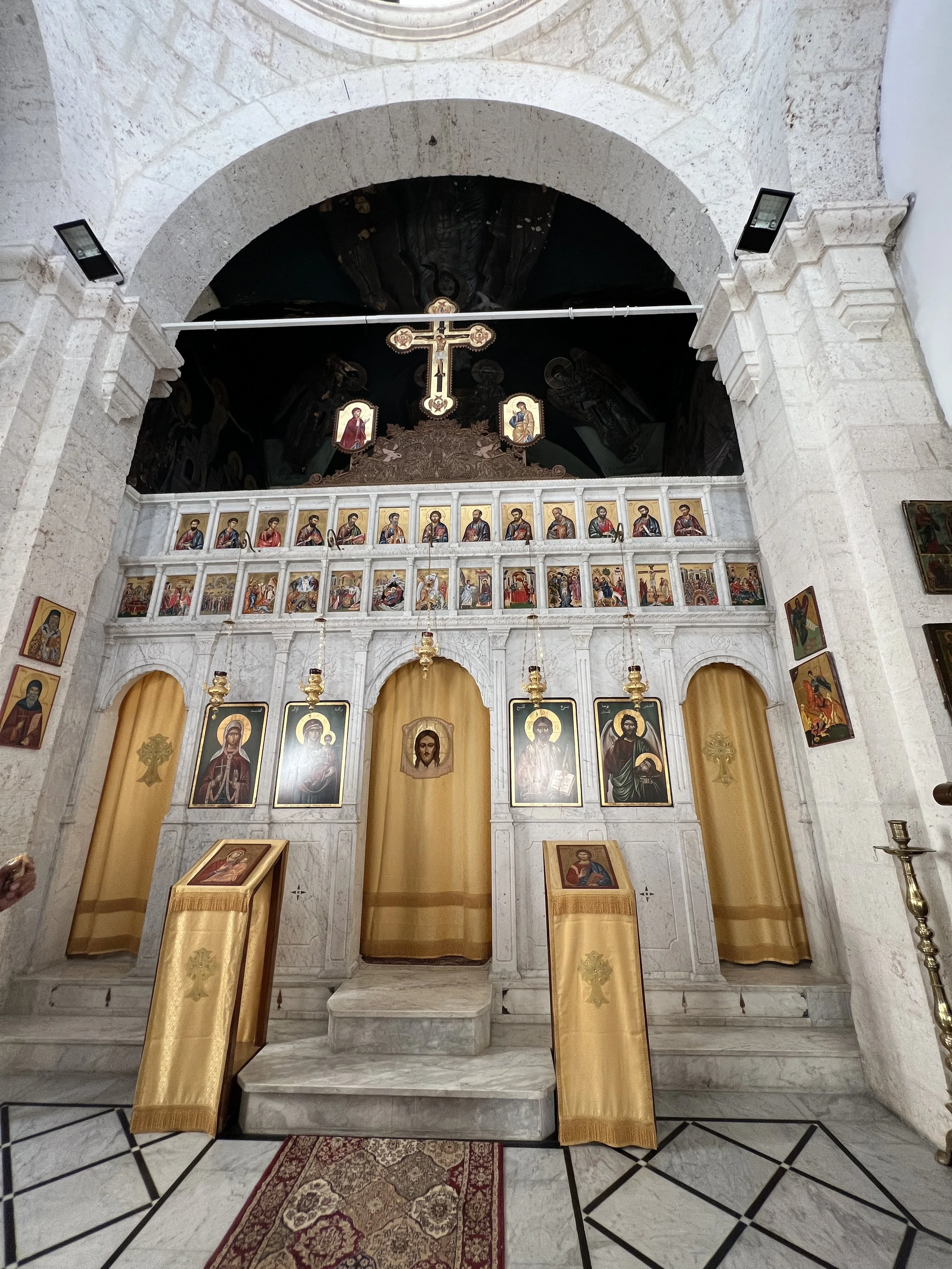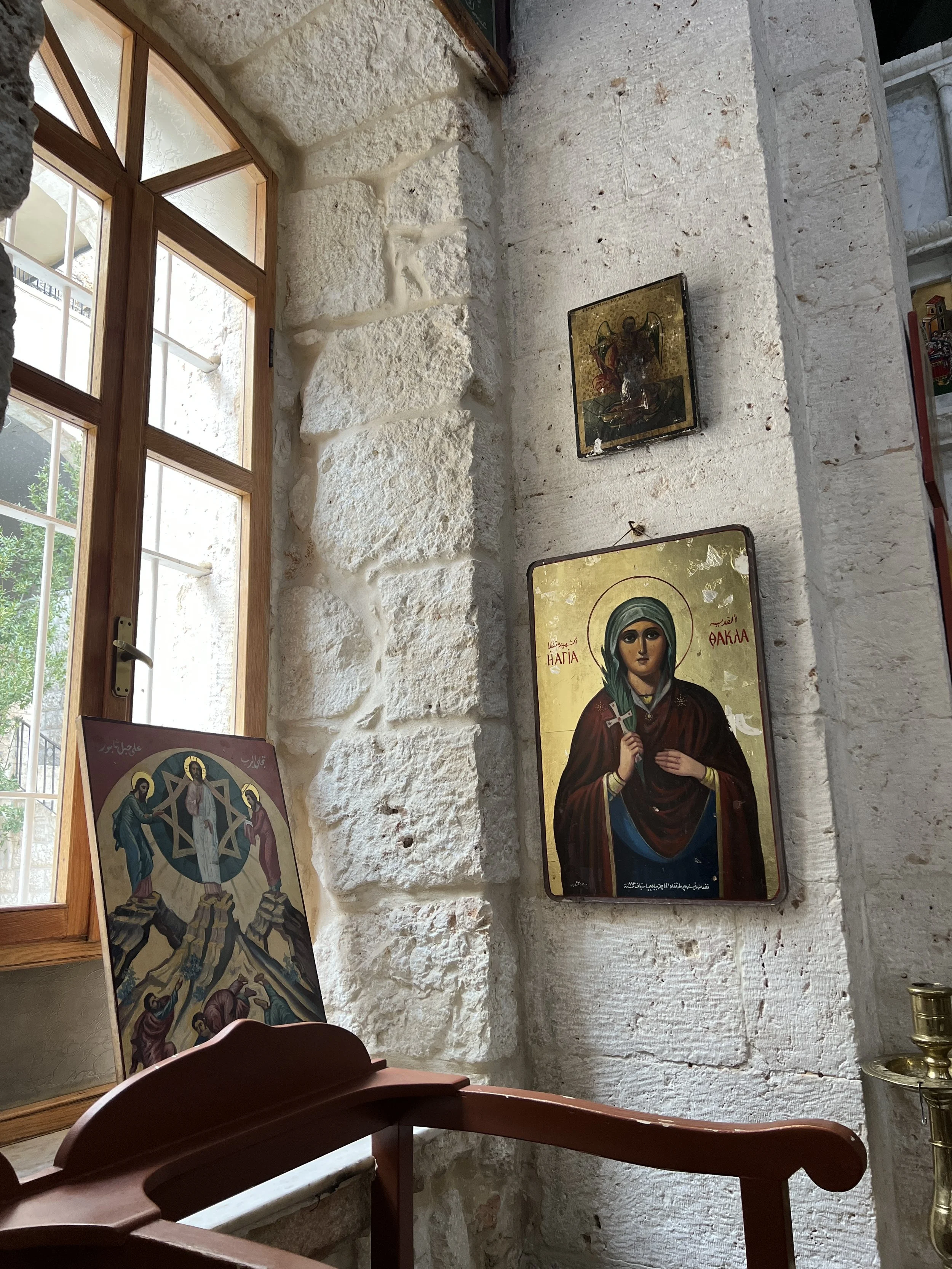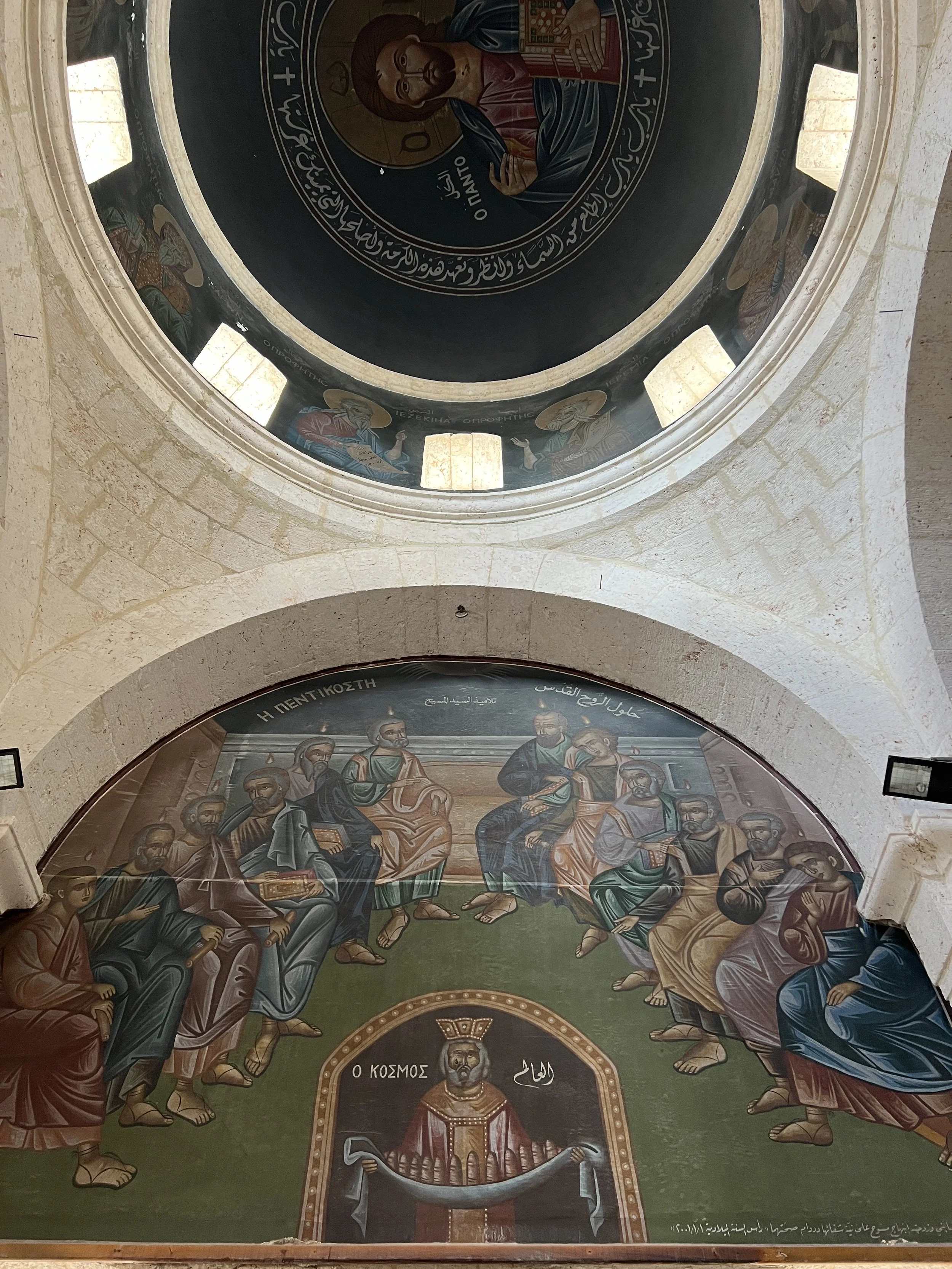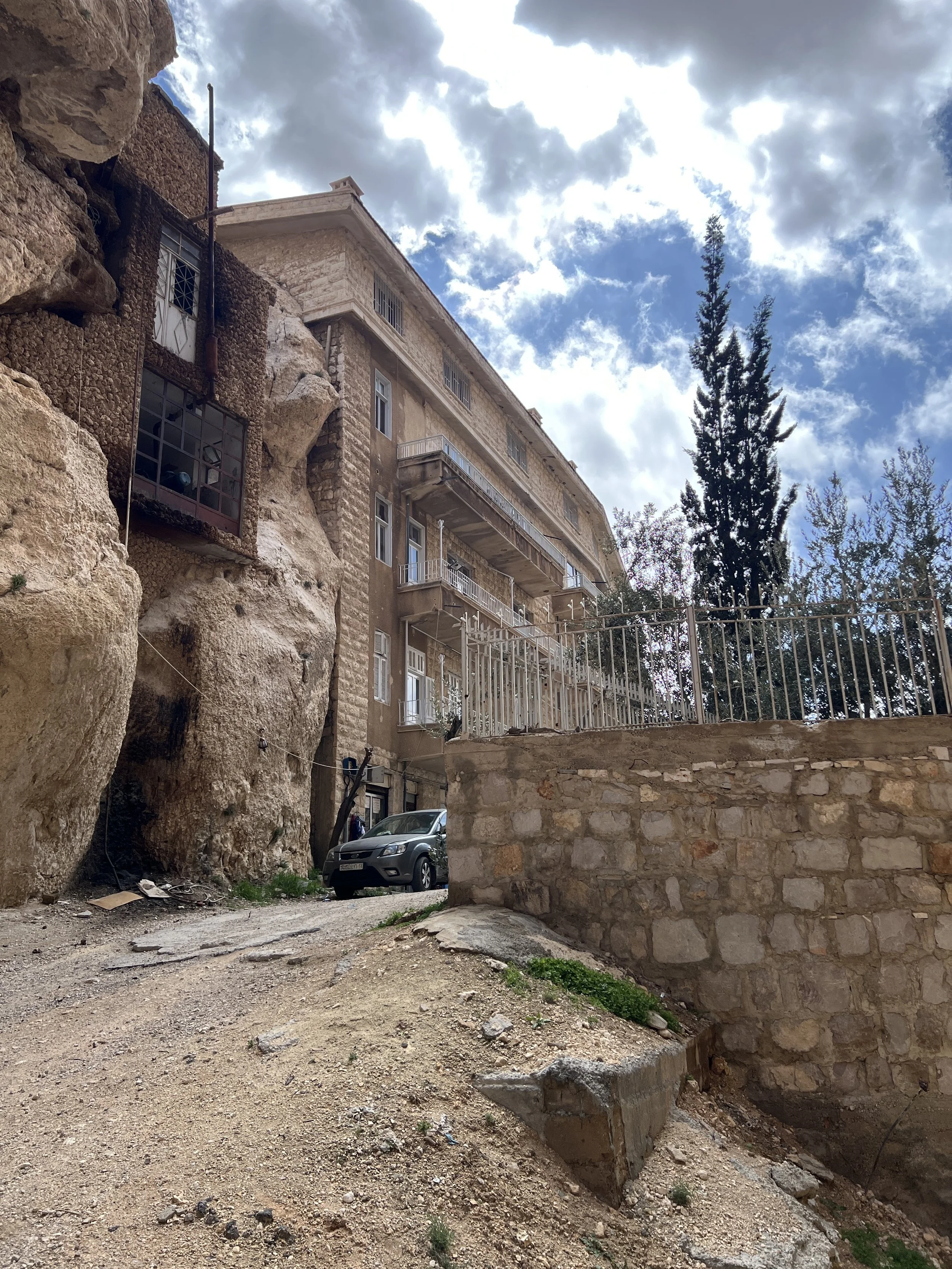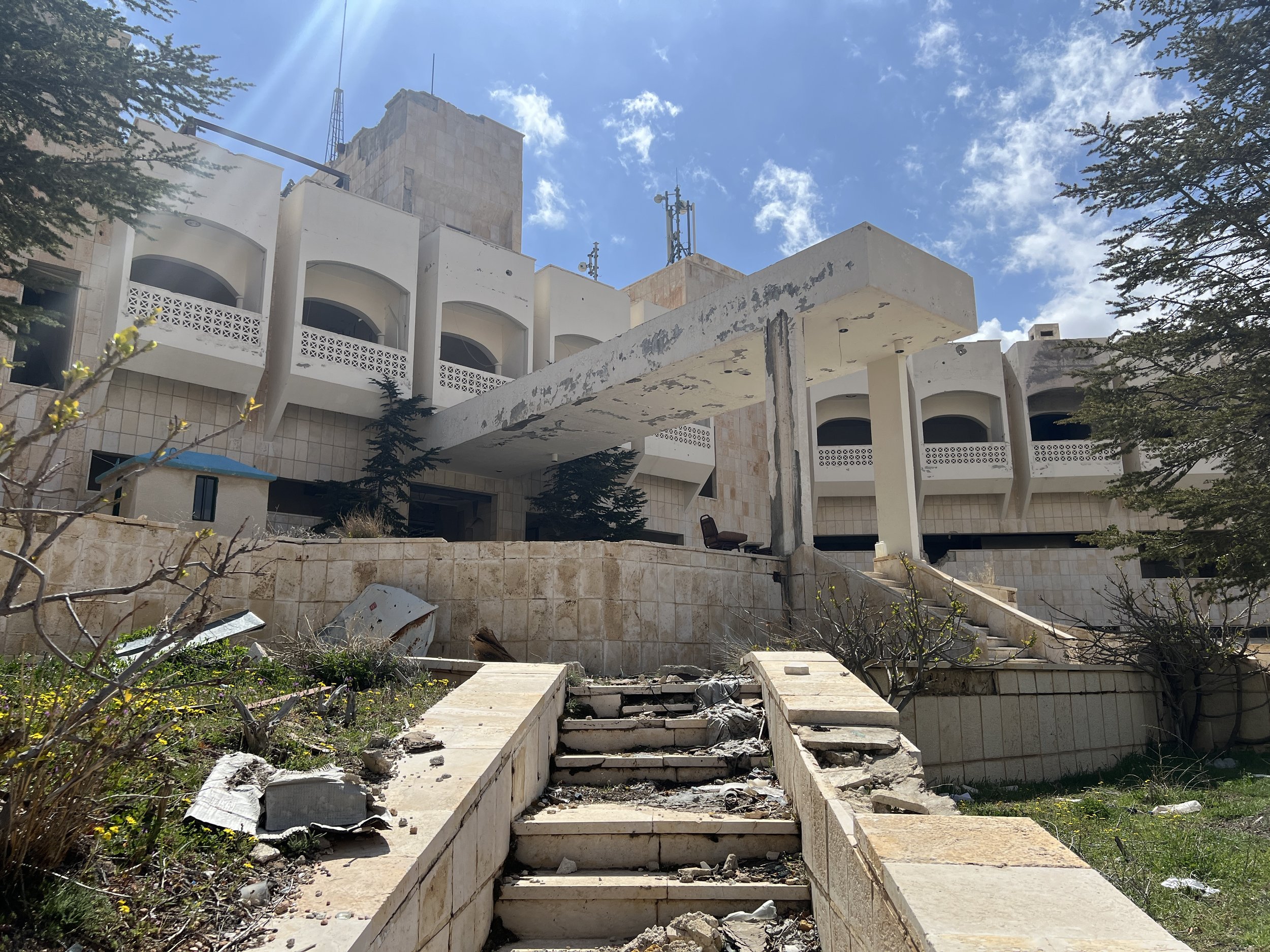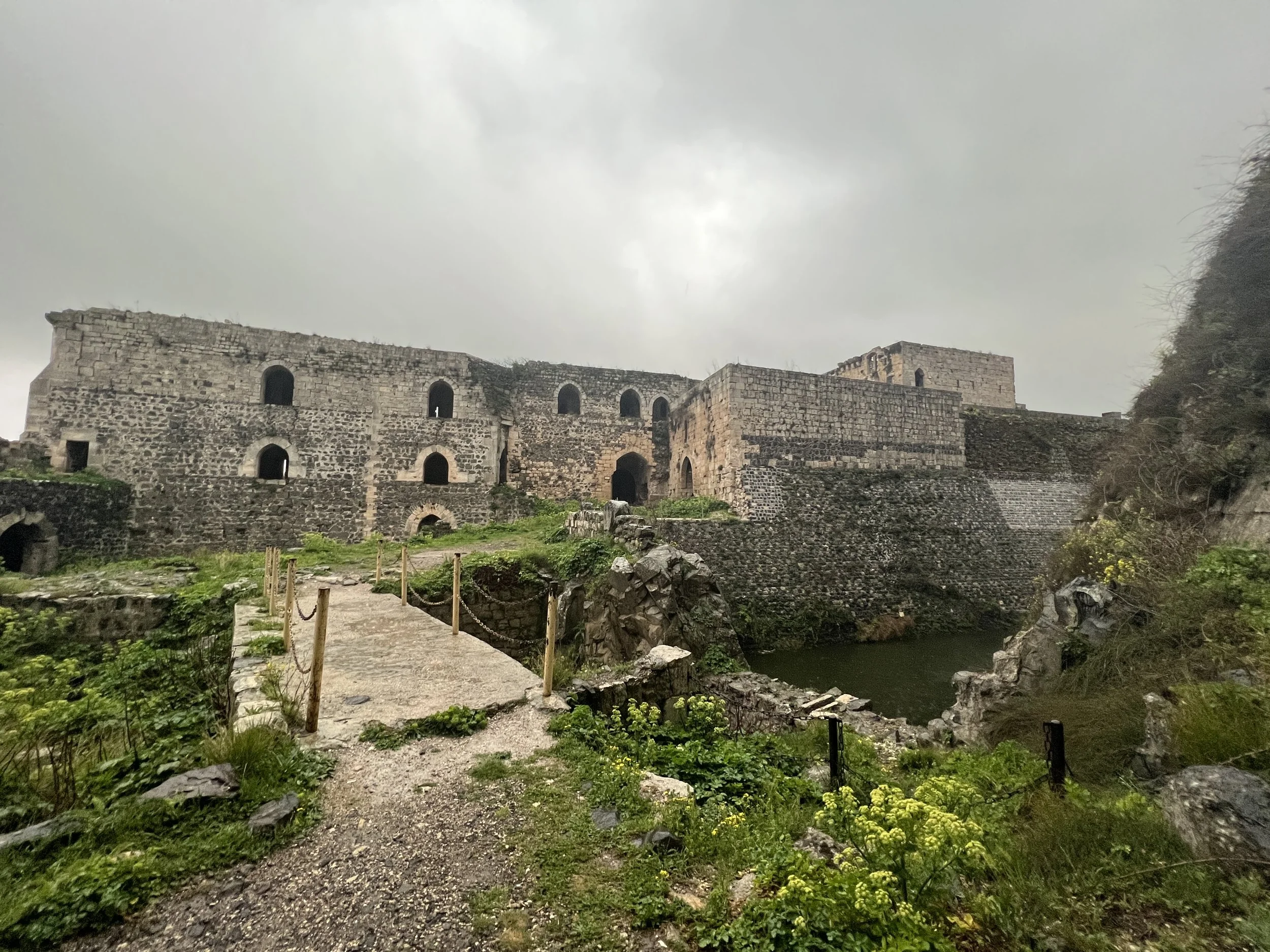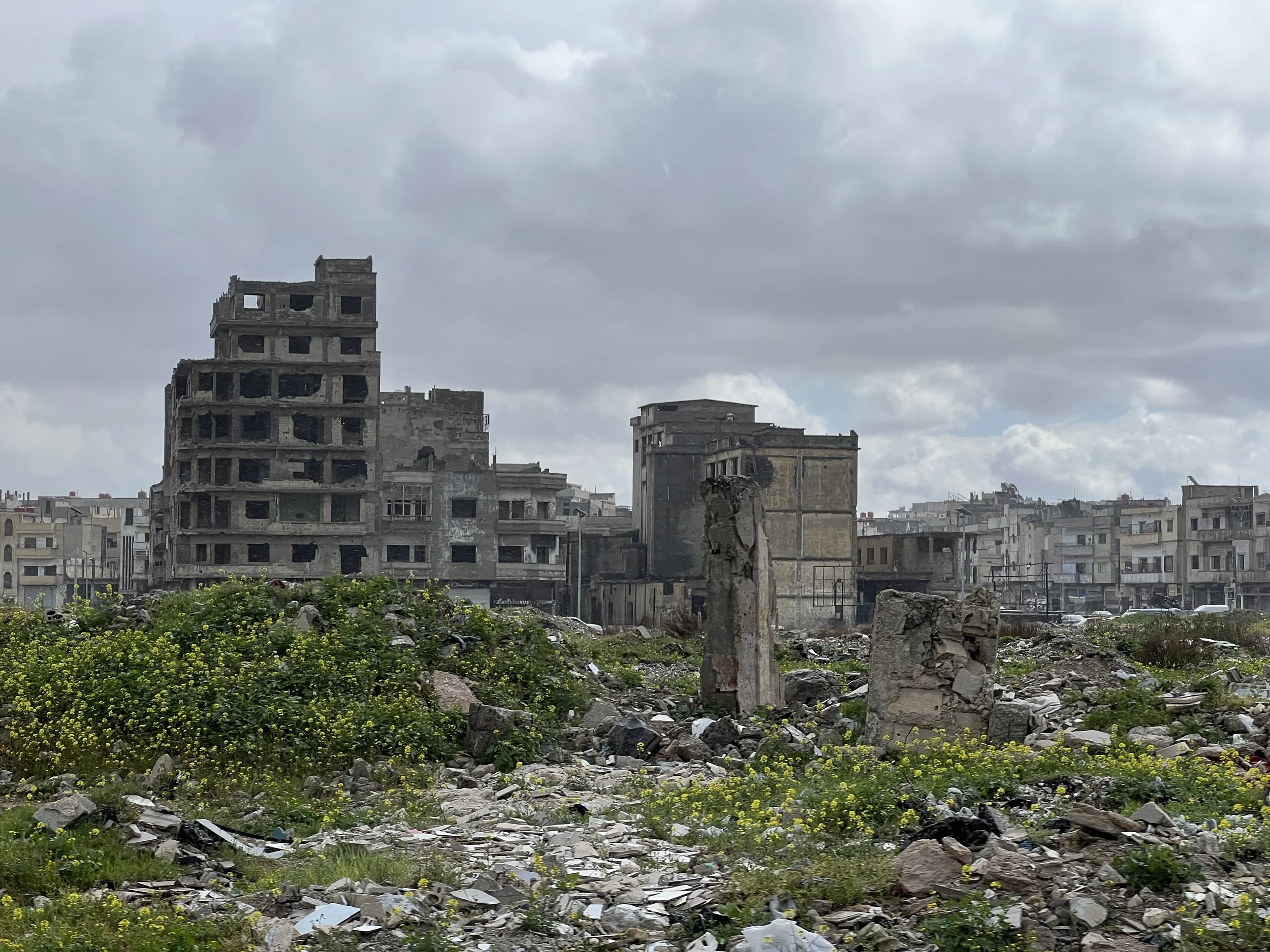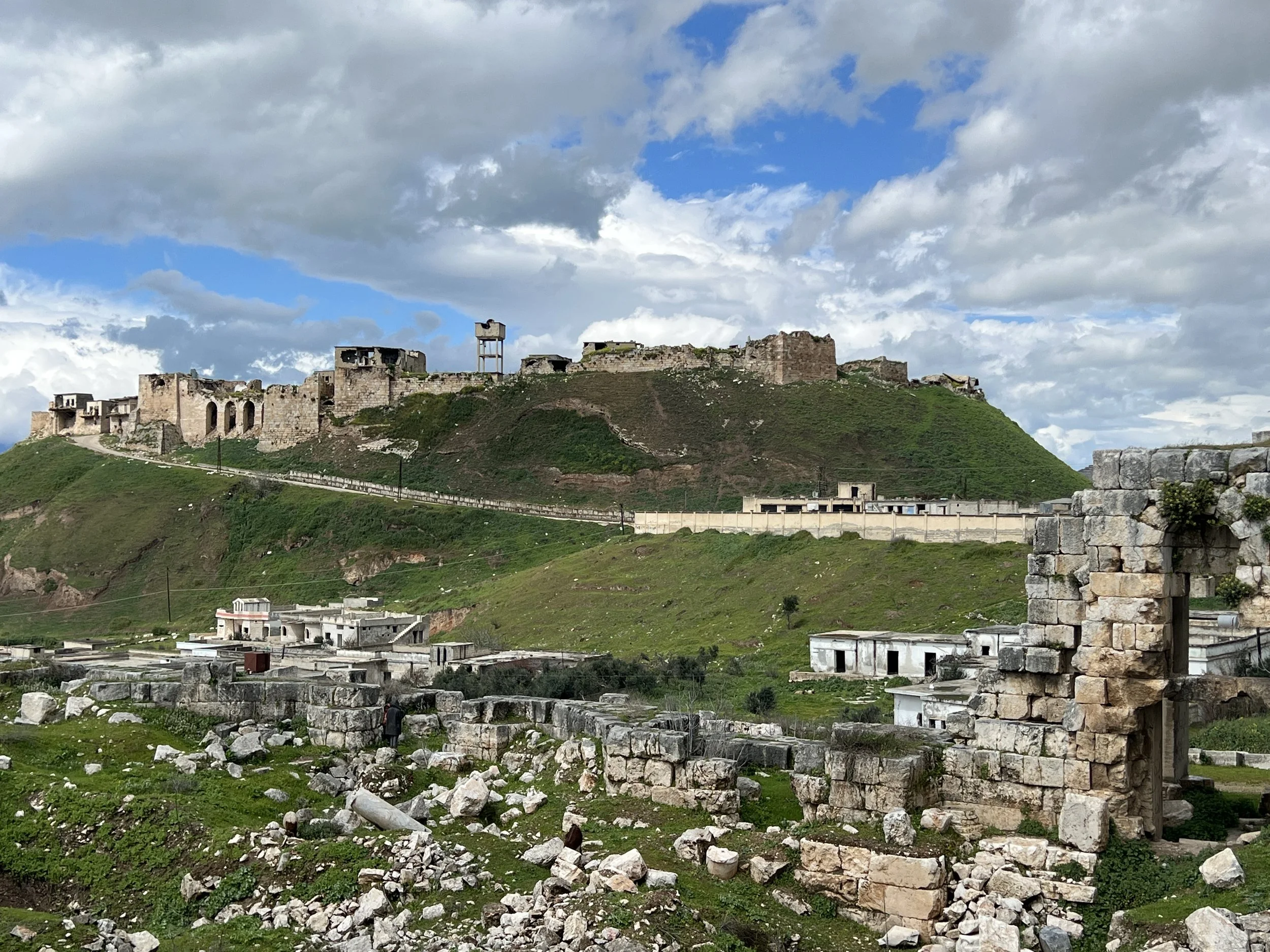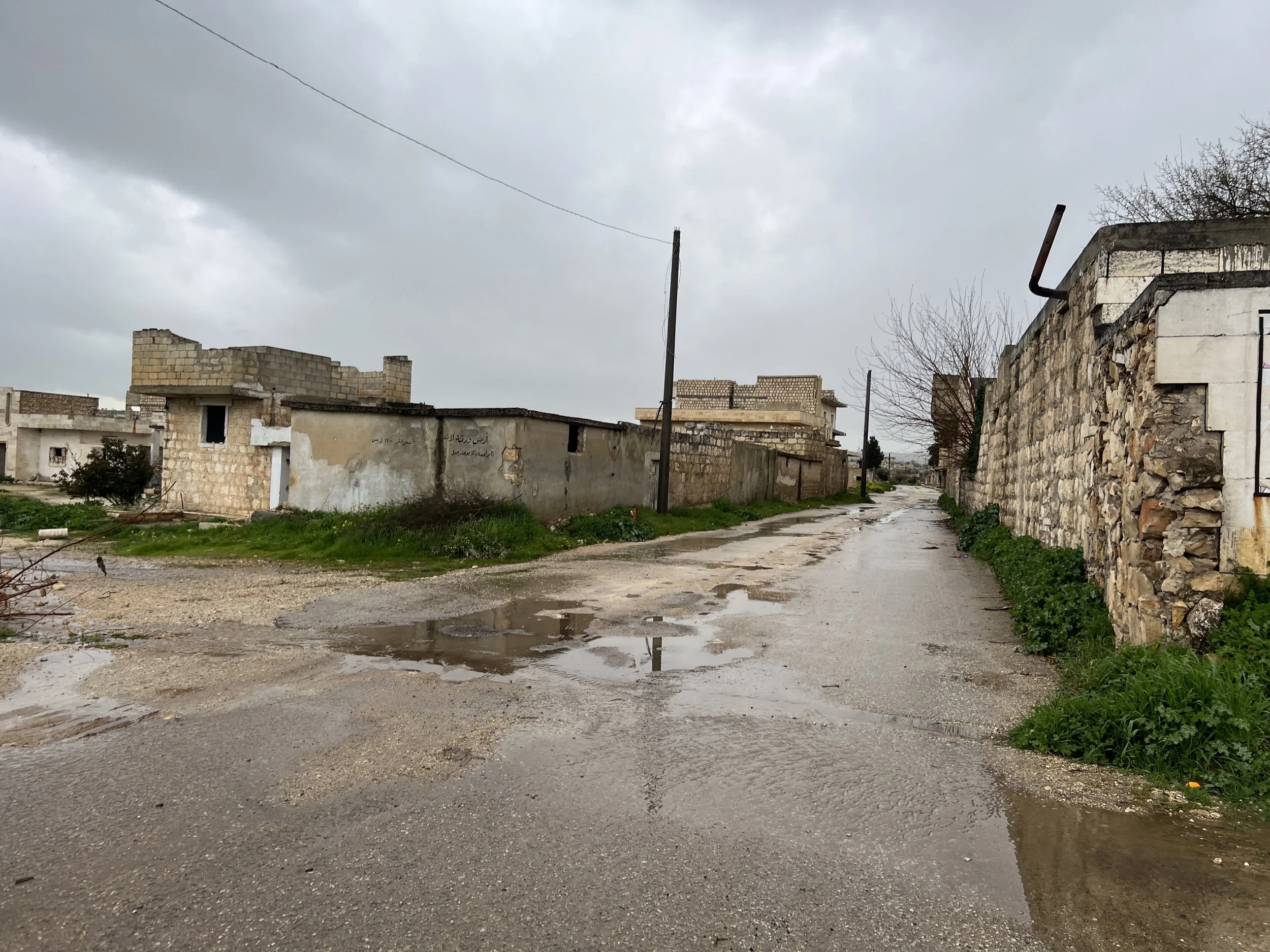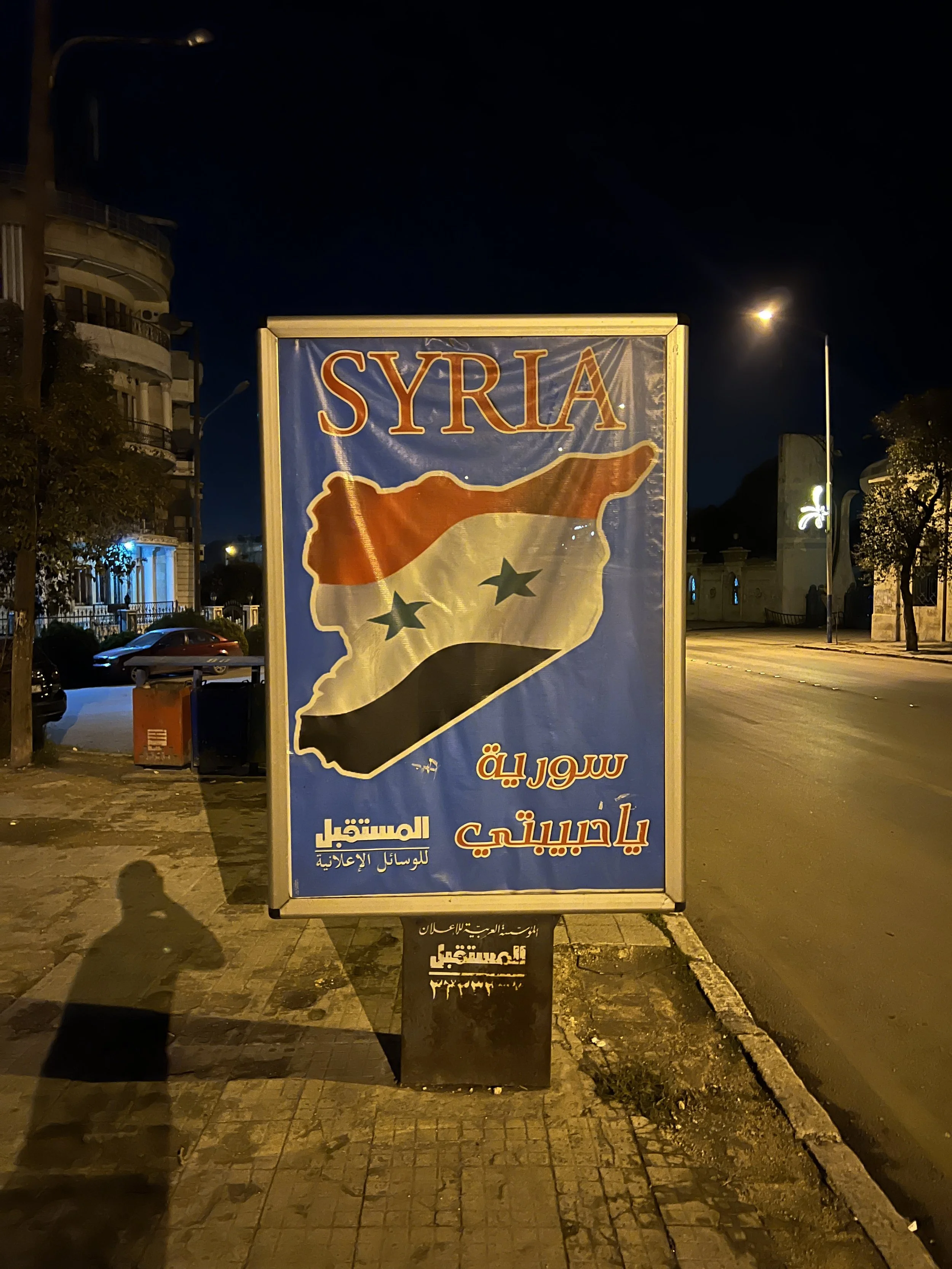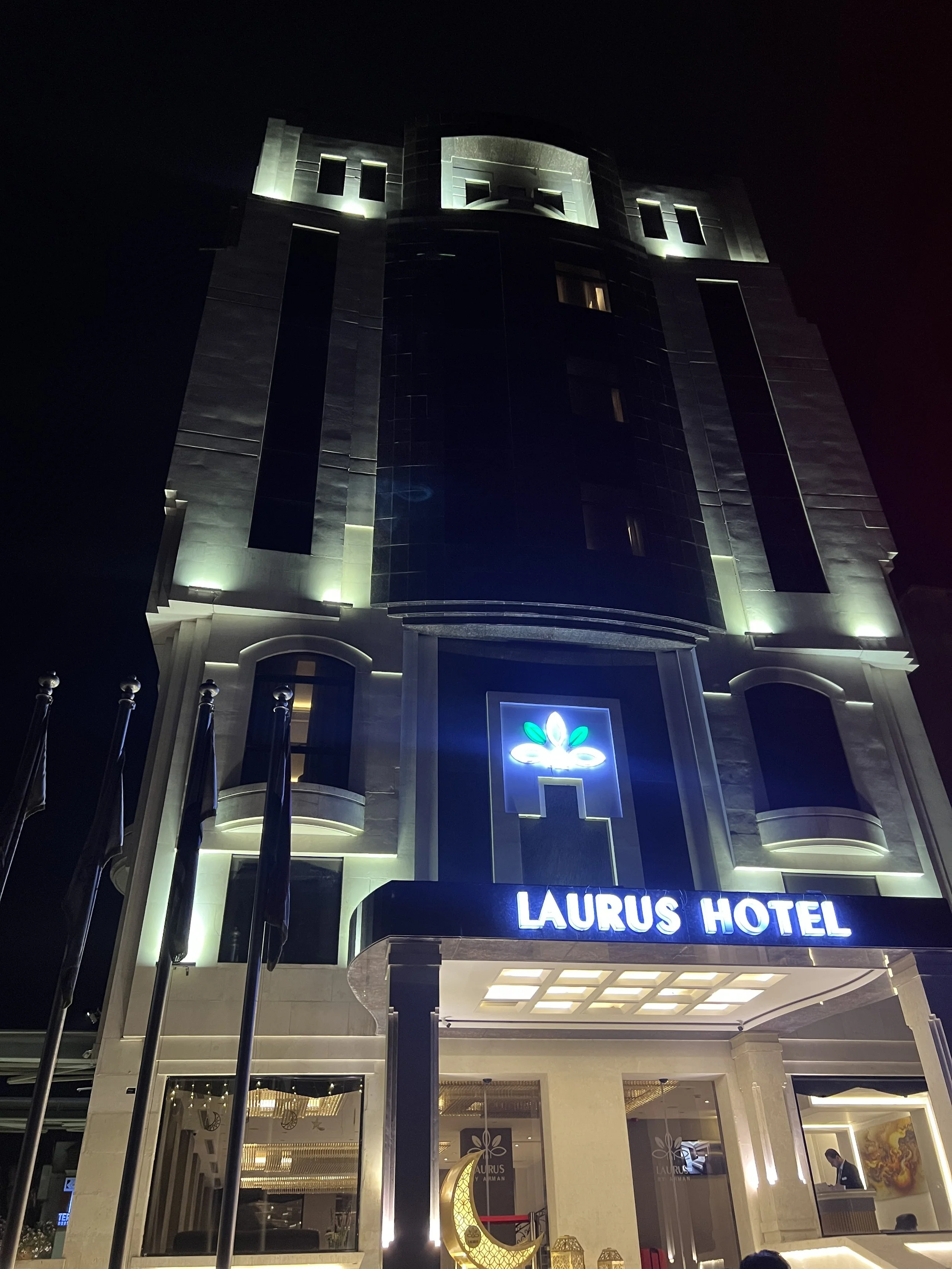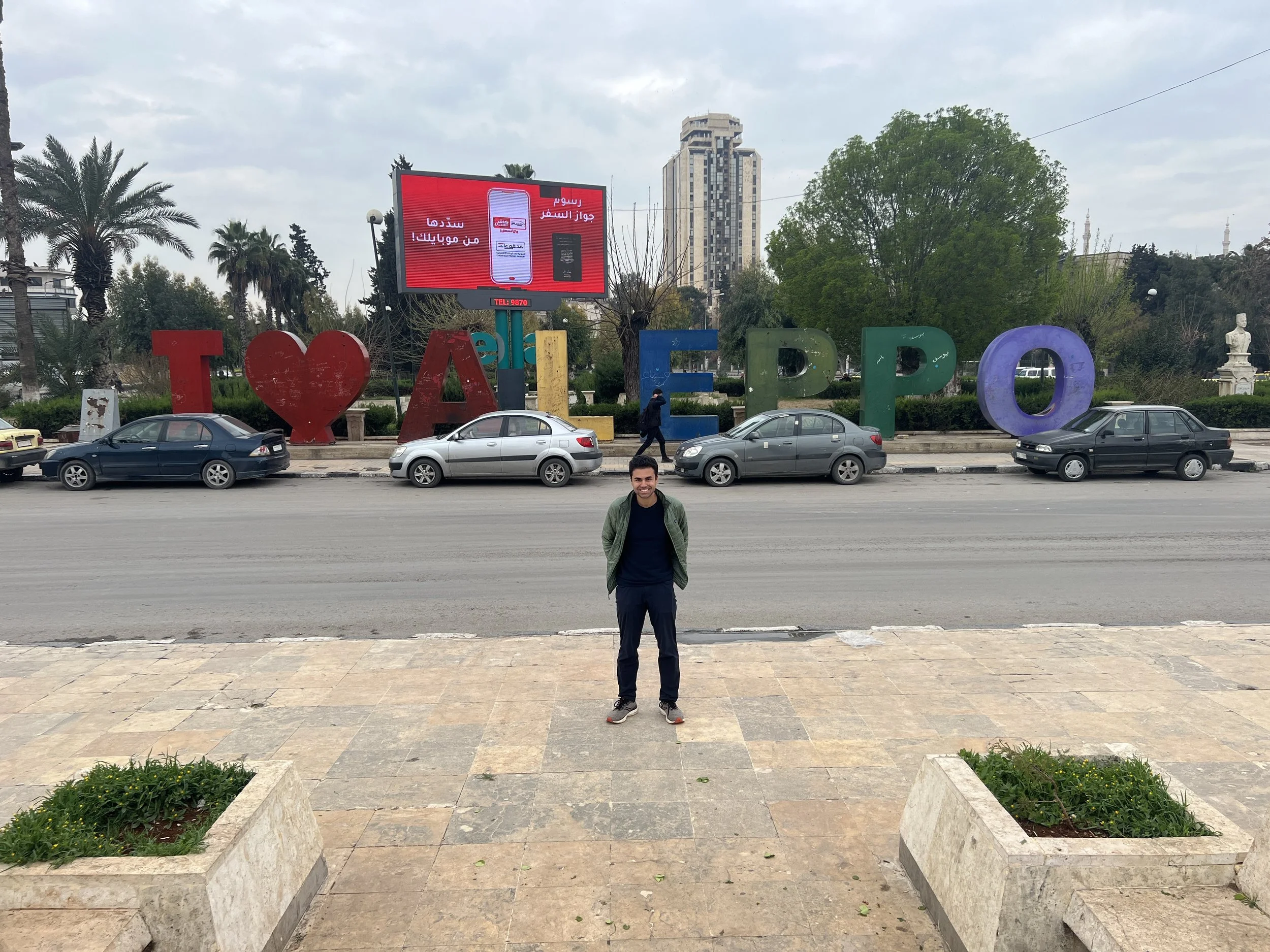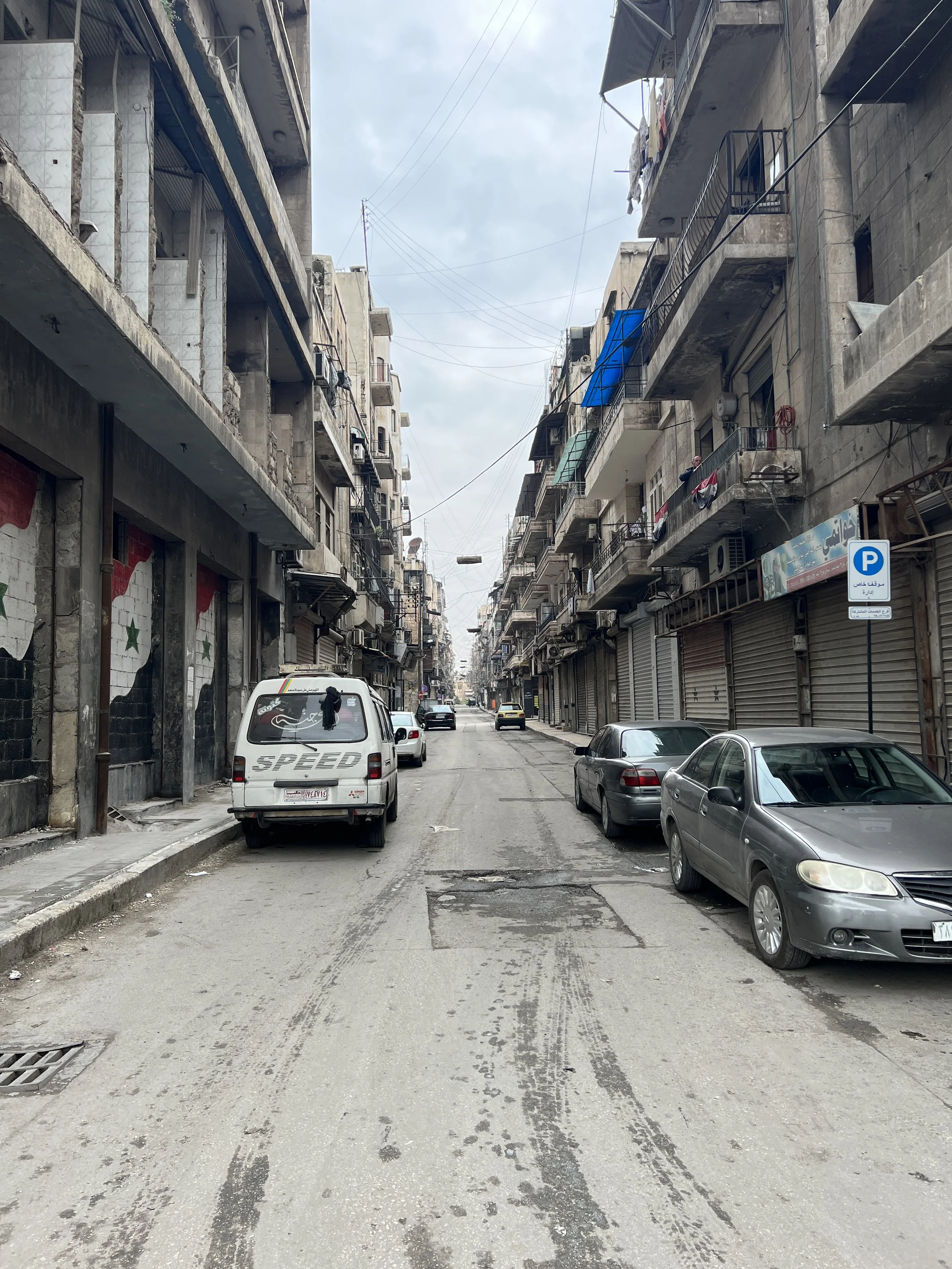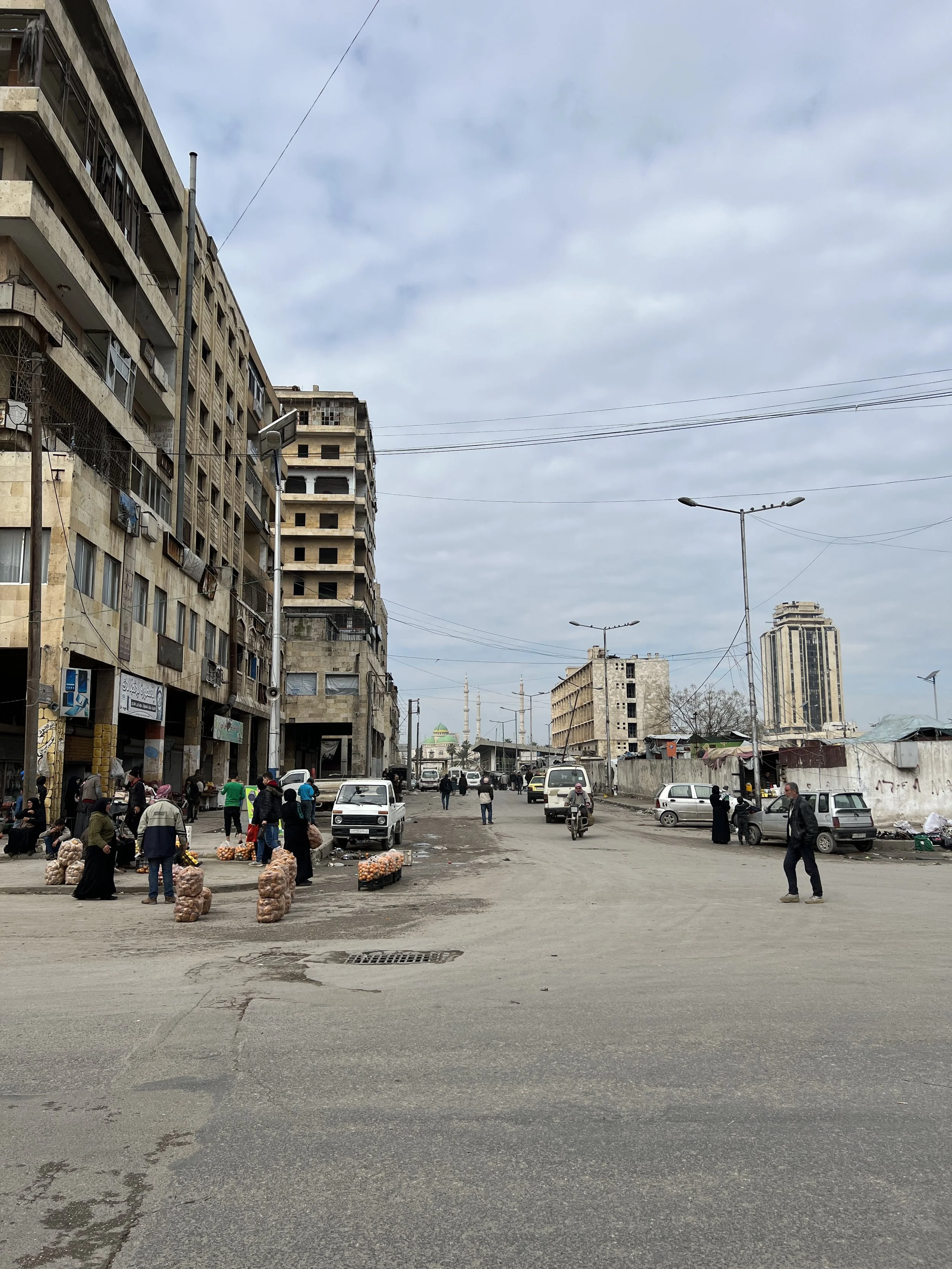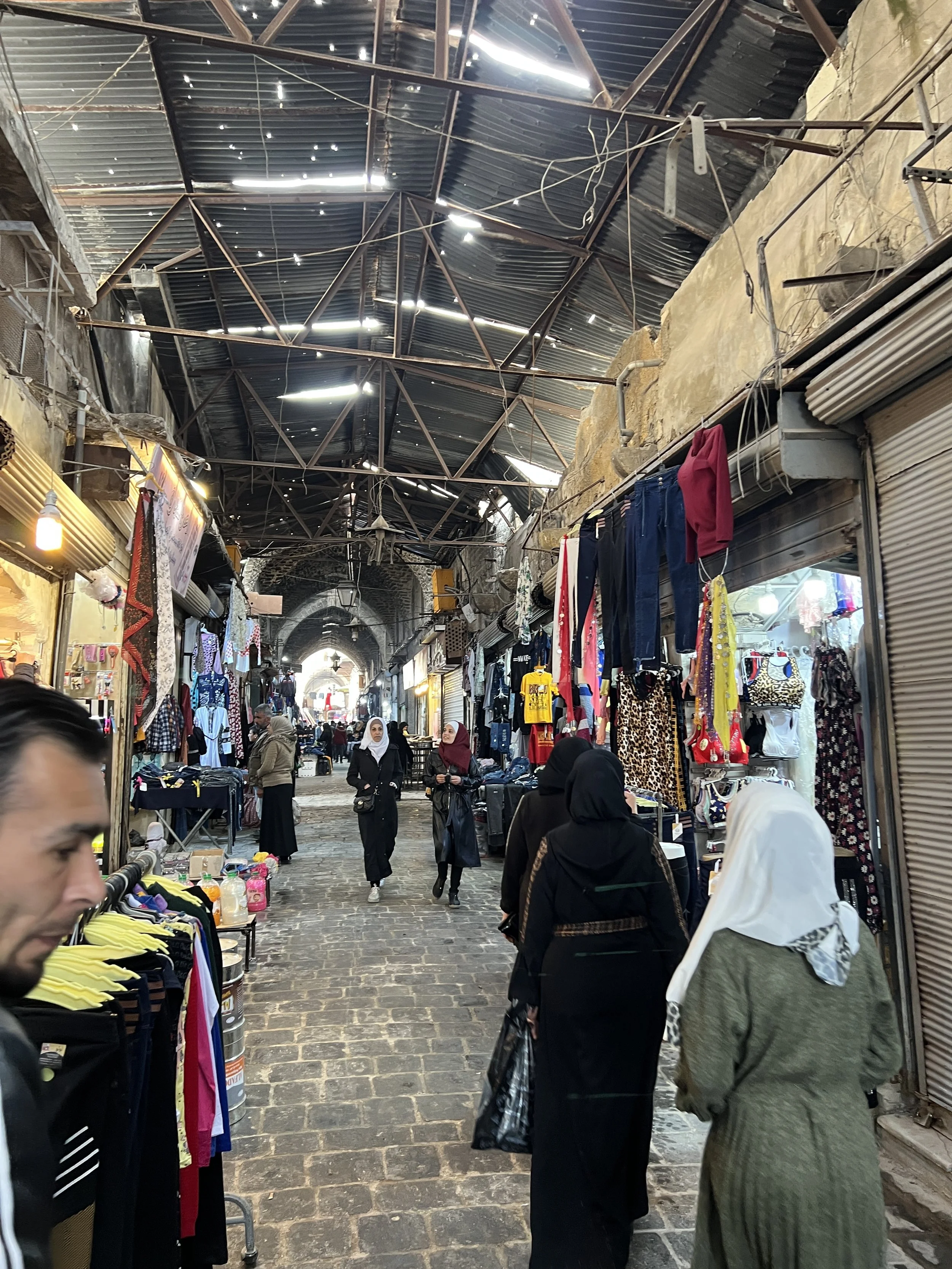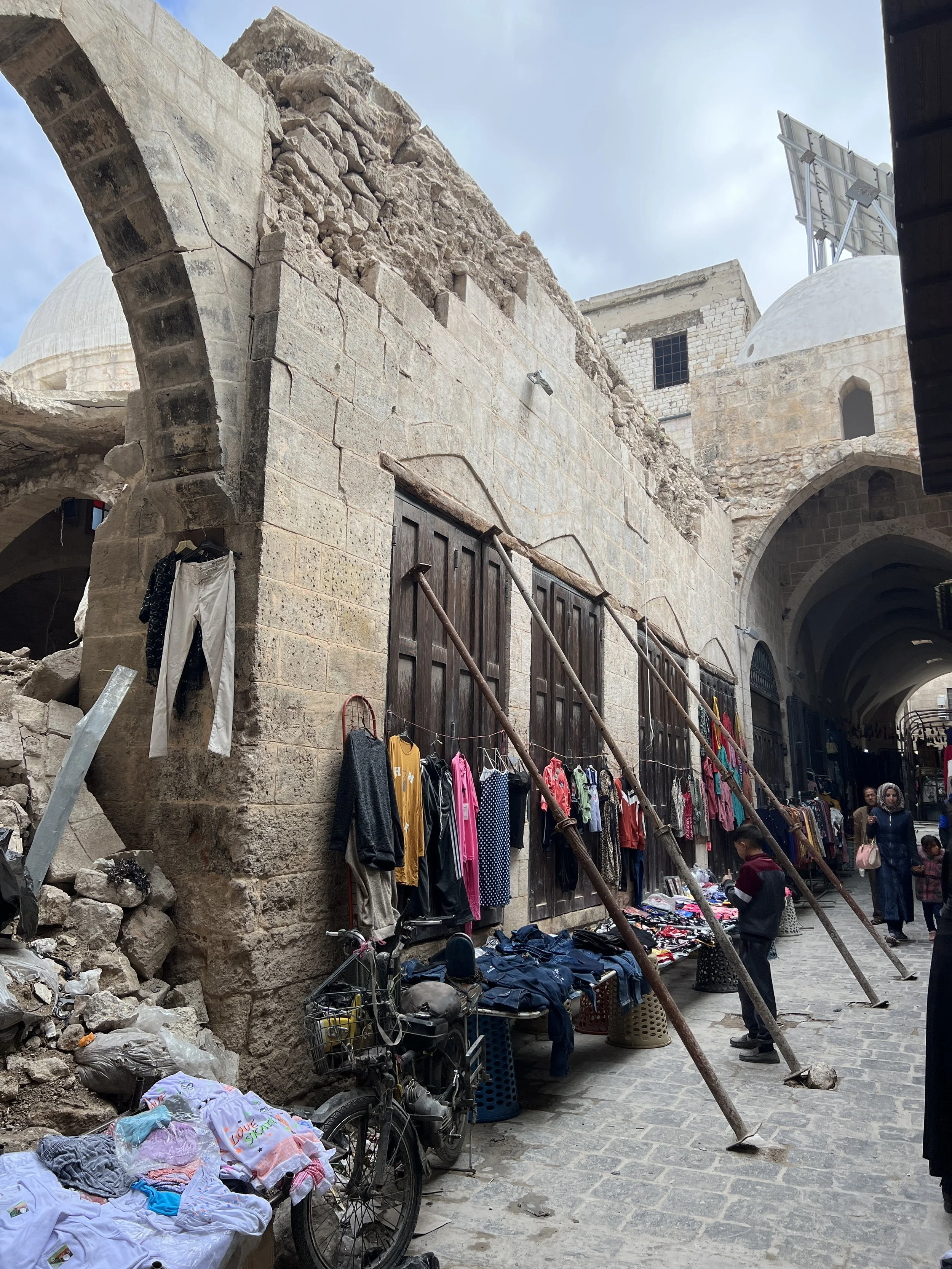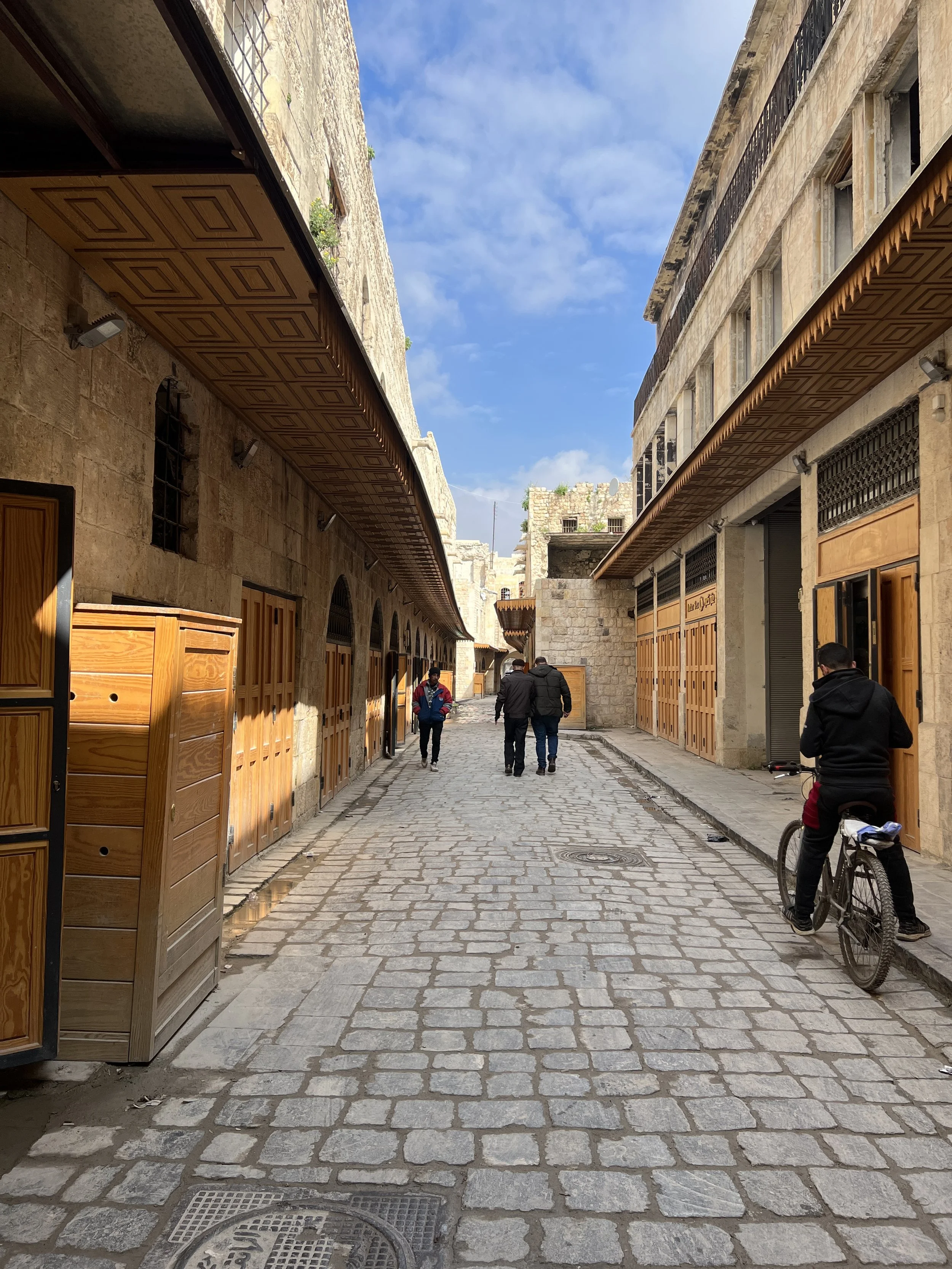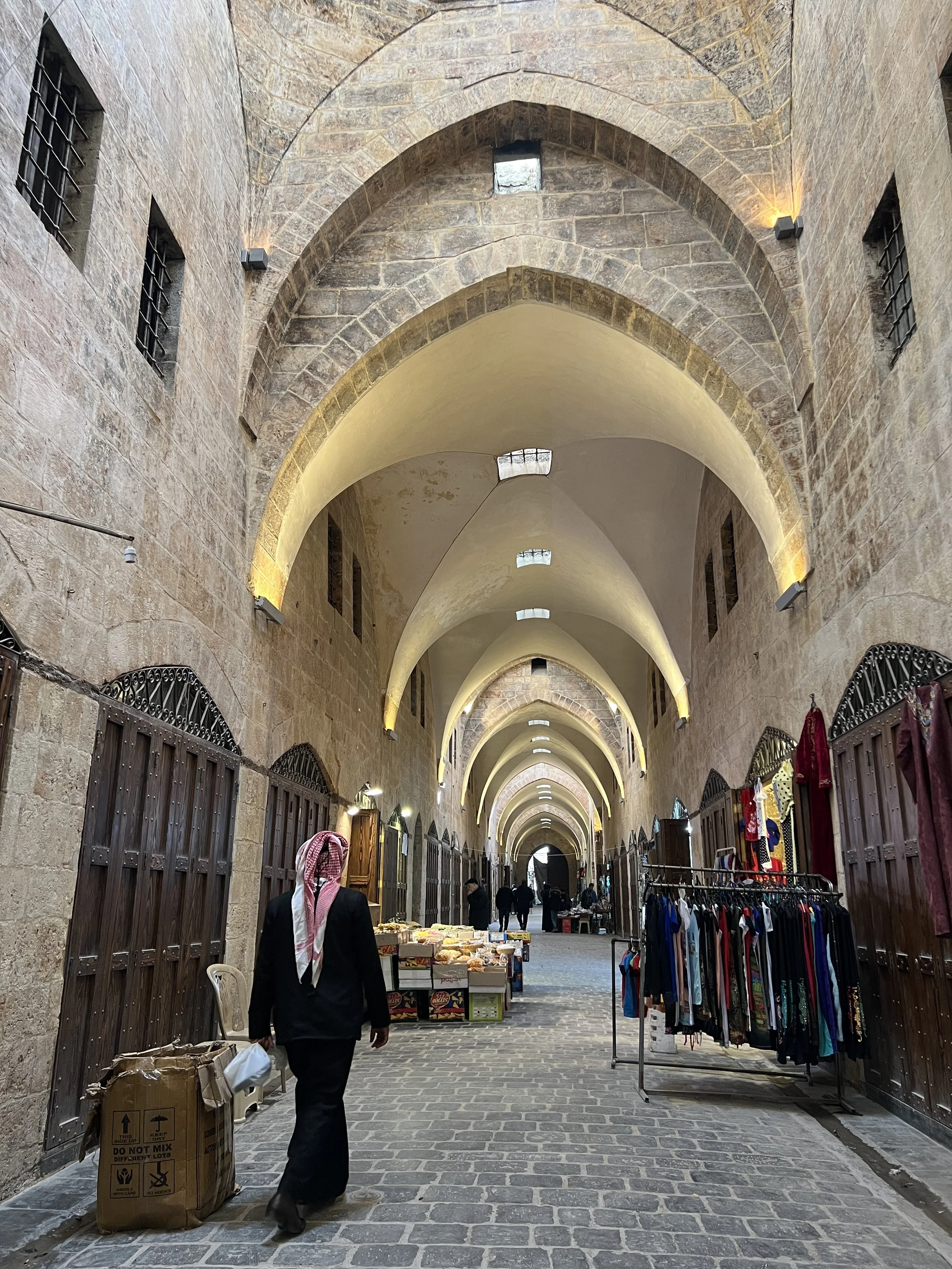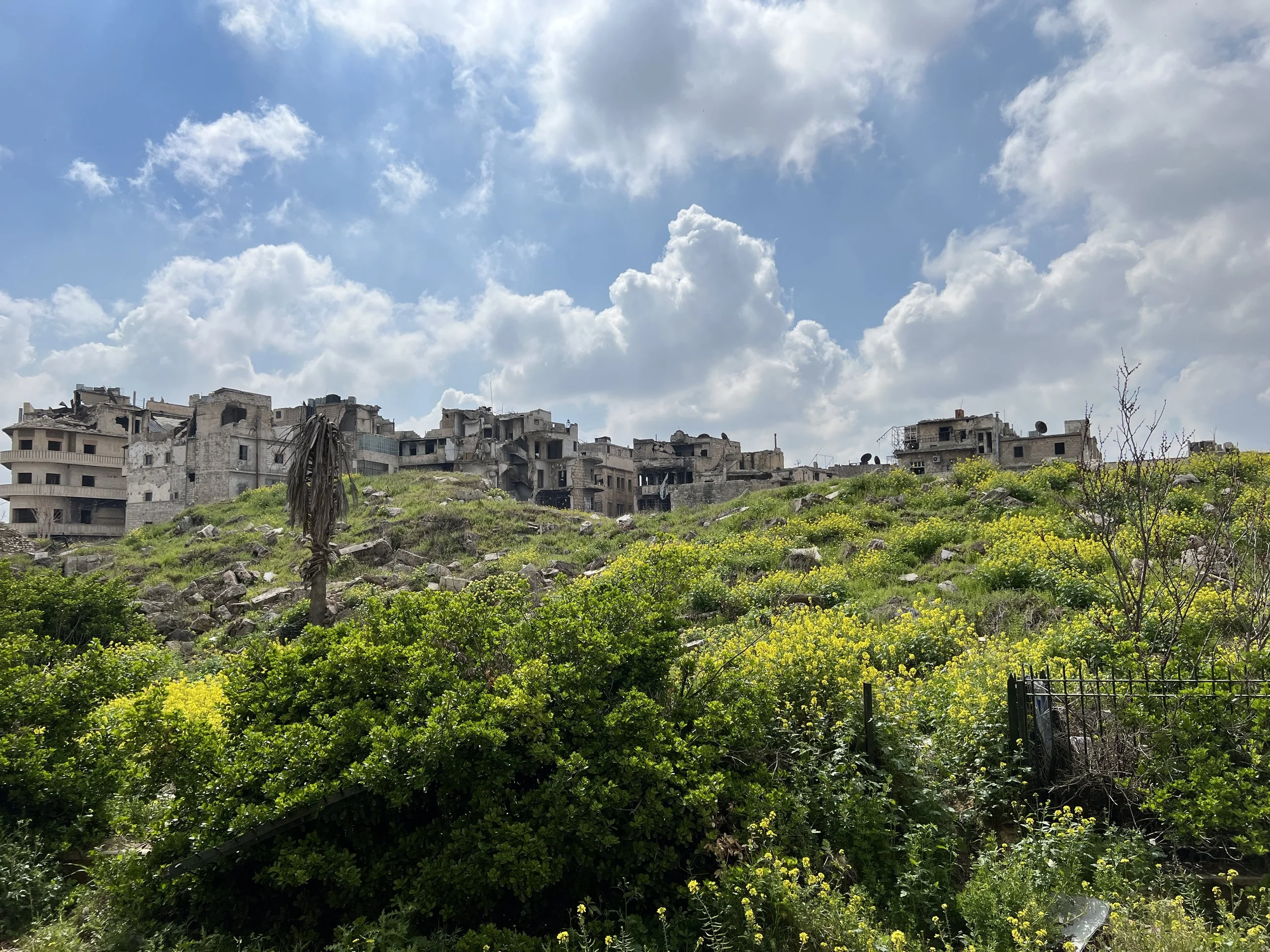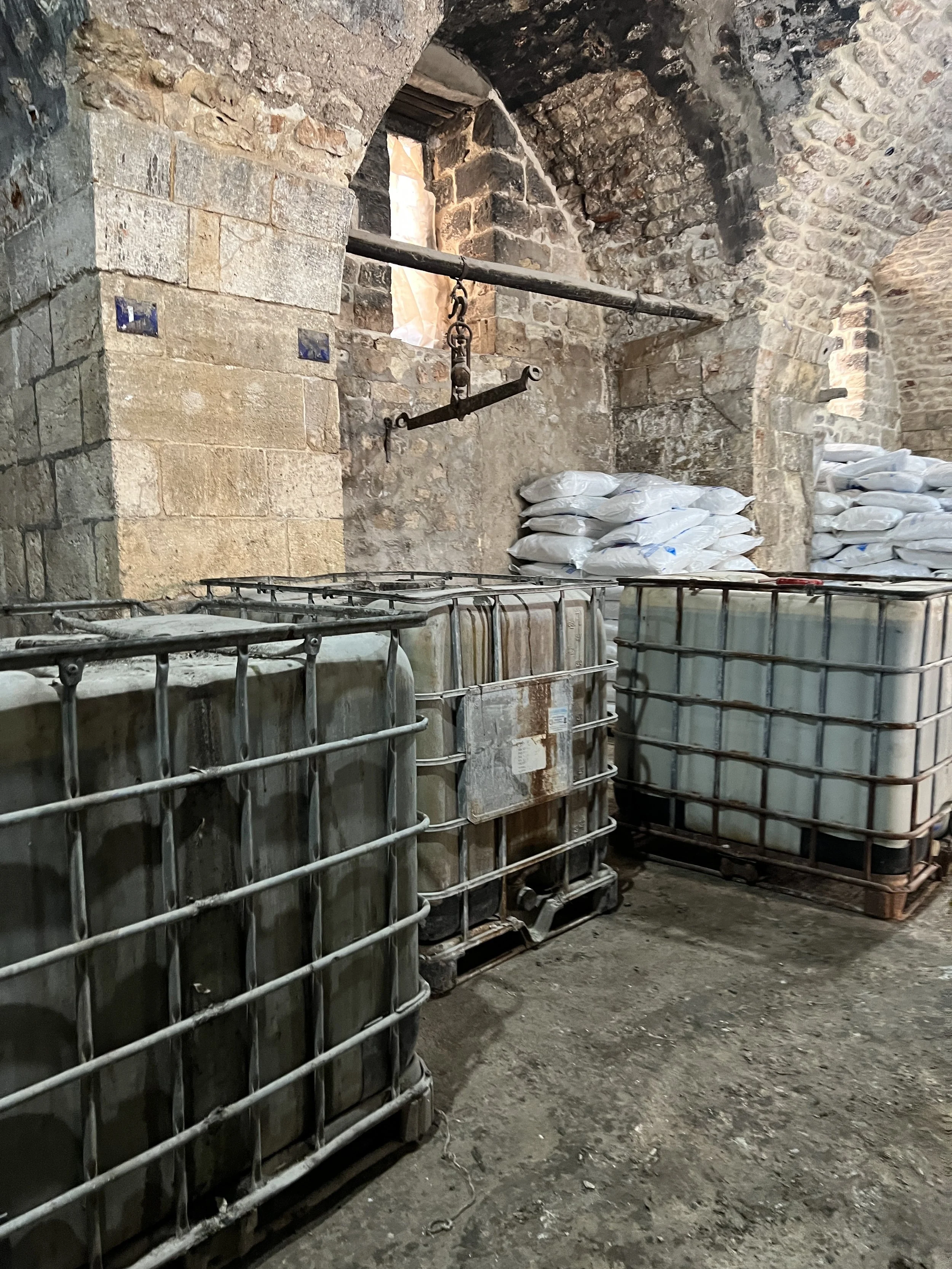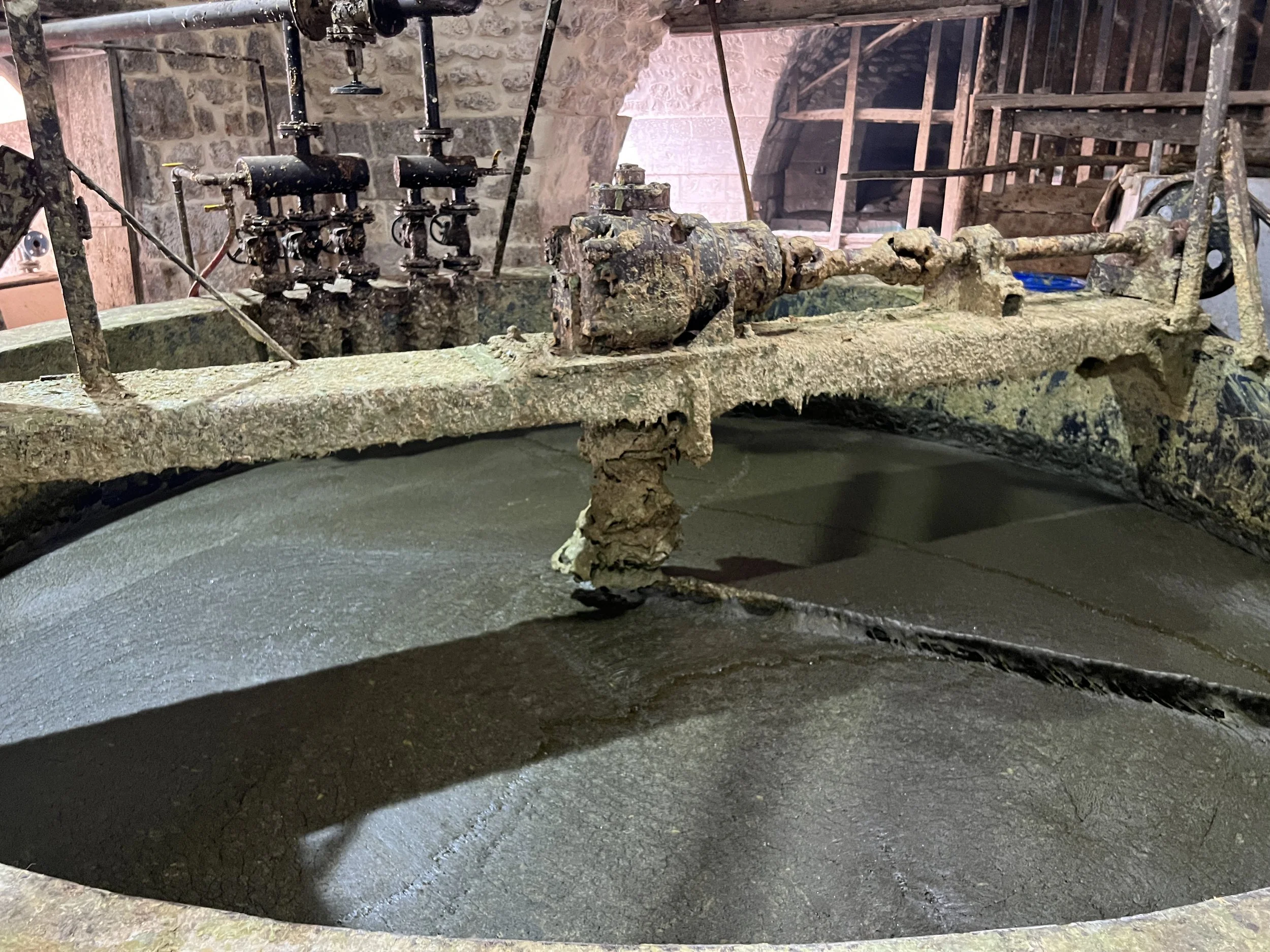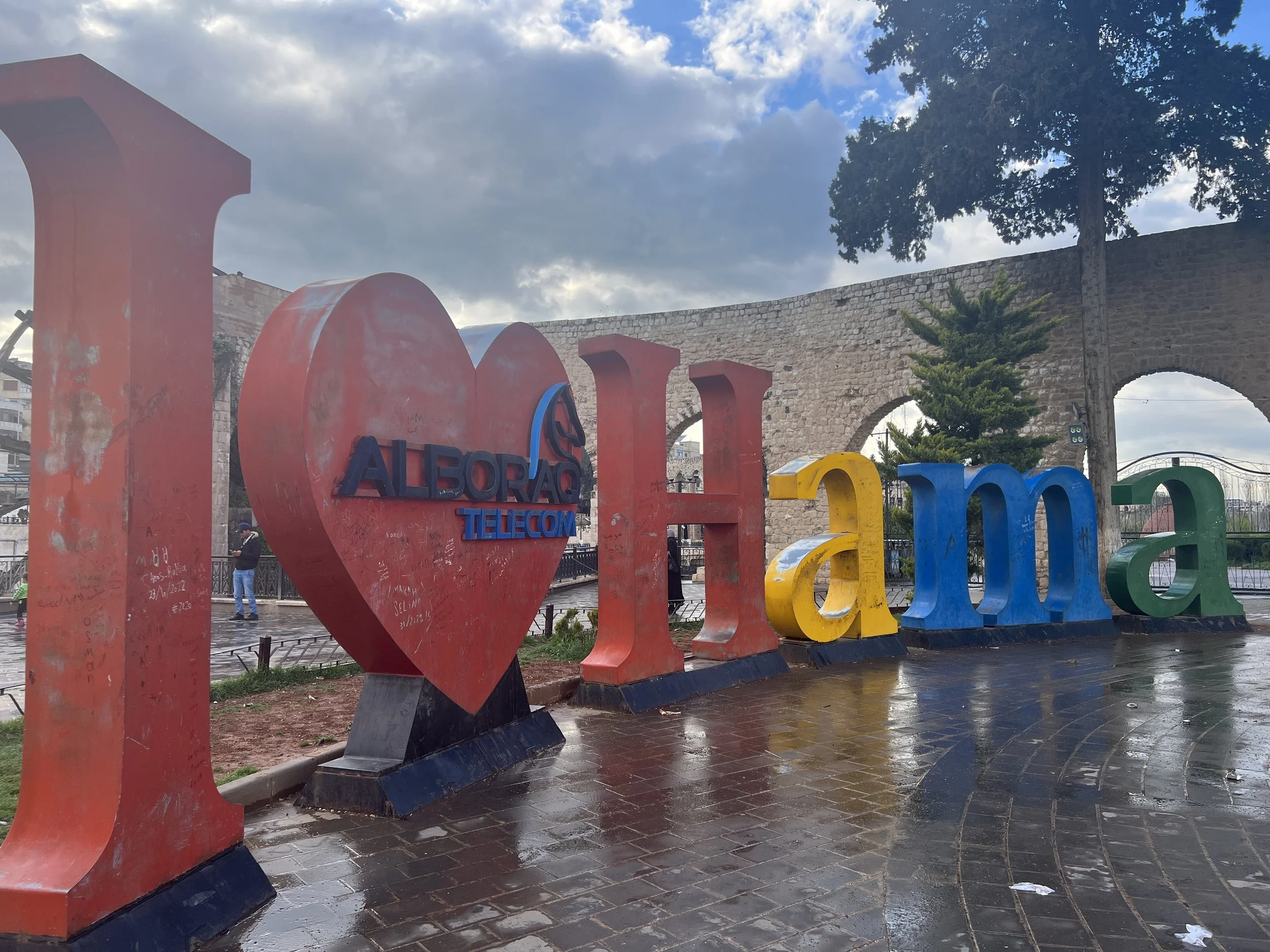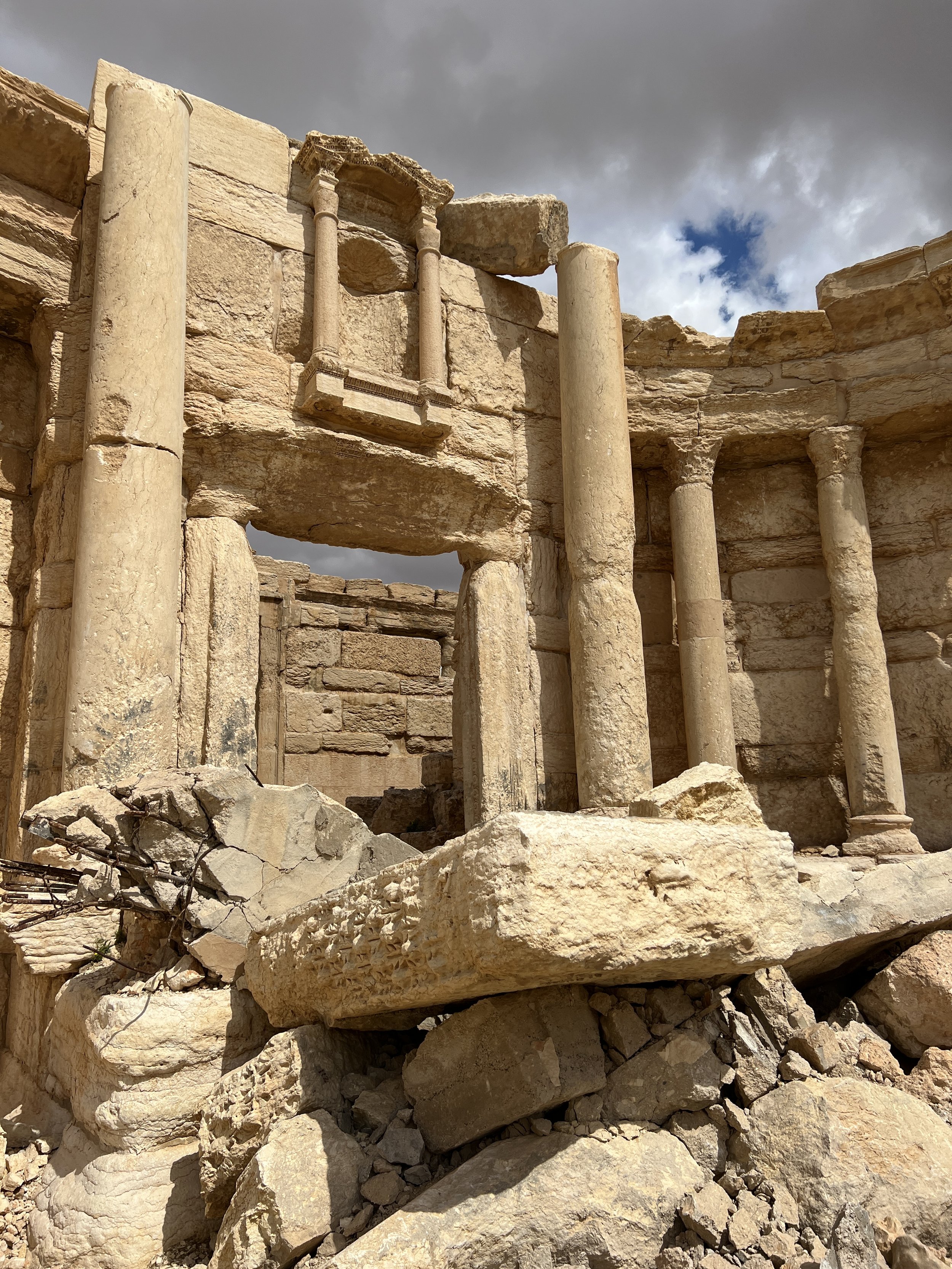Syria
Syria has been a dream country of mine for years. In many ways, the allure of the country has been similar to that of Iraq– a country with an unparalleled amount of history combined with modern day strife.
My Visa Saga:
I originally planned to visit Syria in July 2022. My brother and I decided to go on a trip together, and I told him that I would happily go wherever he wanted. He chose Syria. At the time, Syria was not accepting American citizens, but we were told by our tour guide that Americans applying on a non-US passport wouldn’t have a problem.
Unfortunately, about a month before the trip, we received an email telling us that our visa had been denied. It seemed like now Syria was denying visas to not just people traveling on US passports, but anyone they knew was an American citizen, such as those born in the US. We were told we could possibly apply for a special permit to visit, but we were told it would take at least 3 weeks to process. Therefore, we would only know about the verdict a few days before our trip. That wouldn’t leave us a lot of time to plan something new in case we were rejected again, so we decided to pivot and leave Syria for another time.
Through a Facebook friend, I became connected with a different guide in Syria, Fadi of Golden Team, who said he could apply for a visa with a foreign passport listing a place of birth.
In certain countries, the relationship your “fixer” (guide on the ground) has with the visa office can alter your visa decision. For instance, in Libya, I was rejected when I applied through the visa with one fixer. A few months later, with a different one and the exact same information, I was accepted.
Originally, Fadi said it wouldn’t be possible to get a visa with a US place of birth. However, a few weeks later he wrote back saying that it was now possible. I sent over my passport, and within 10 days I was told my visa had been accepted. Score!
Now I just had to wait until my trip in March.
The Journey to Syria
After flying to Beirut from Paraguay, we met our tour group in Hamra, Beirut and headed out in a van towards the border. Before reaching the crossing, we stopped off at a small cafe for some great manaeesh (cheese bread). Here I also exchanged some money. I changed about $150 USD and was given a fat stack of cash!
Before we knew it, we arrived at the border crossing. We were quickly stamped out of Lebanon, and then we proceeded to the Syrian side.
Originally, I was very worried about this border crossing because I was afraid of being rejected entry if the border official noticed that I was born in the U.S.. The friend of mine who gave me Fadi’s contact was once rejected at the Syrian border because they saw his US passport in their system from his visit prior to the civil war. However; I figured since I had the valid visa and my passport (which they saw when processing my visa) visibly showed my U.S. place of birth.
I was also put at ease that one of the first Americans allowed to travel to Syria on a US passport was traceling wit us. It seems like Syria now has softened its stance towardsa Americans visiting the country, which I am happy about because now more people will be able to see this magical country.
To get the visa, our guide gave the border official our visa authorization codes. Then we paid the visa fee. The fee varies by nationality. Americans are charged $160, Canadians $100, Germans 60 Euros, Brazilians $10, and Serbians enter for free.
After paying the fee, we waited for about an hour for our passports to be processed. During this time, my tour group and I got to walk around and take some pictures Infront of the signs showing we had made it to Syria! While taking some pictures, a car stopped, and someone yelled out “Philippe!” At first, I thought I was being deported (would I have been able to count my visit to the country had I been sent back?). However, it turns out Joan, the blogger who led my trip to Libya recognized my jacket and saw me. What a small world!
Soon enough, our passports were returned to us, and we were off to the fabled city of Damascus.
Damascus:
After a couple hours driving, we made it to the world’s oldest continuously inhabited city.
We dropped off our things at our small hotel in the old city of Damascus. This hotel used to be a large home with a central courtyard.
We then began our walking tour of the city, heading through the bazaar, Umayyad Mosque, and a caravan sarai.
Afterwards, Fadi took us to a very nice dinner consisting of kebabs, stews, and a special Syrian ice cream dish. Instead of going straight back to the hotel, many of us kept the night going at a karaoke bar. Whilst I didn’t join in all the singing, it was an atmosphere I will not soon forget.
On the topic of smoking, my friend Natalia describes Syria as “a smoker’s heaven.” In Syria it is permissible to smoke everywhere: in restaurants, hotels, and stores. The only place we were told smoking was prohibited was in a monastery, but worry not— they had a smoking area!
The following evening, after our trip to Bosra, we returned to Damascus for the night. A group of us decided to go to a nice restaurant and then walk in the ancient city ourselves at night. Seeing the city during the day, during all the hustle and bustle, is of course impactful. However, I also greatly appreciated getting the opportunity to see the city at its quietest moments.
Bosra:
After the night at the karaoke bar, we headed out bright and early to Bosra. This is an old city with a central theater built by the Romans.
We spent time walking around the old city. We learned that up until the civil war, people still inhabited the homes here. In fact, the gentleman showing us around the area was one of those people. There is a large reservoir here that used to get water directly from the mountains. Unfortunately, it has now nearly run dry. I enjoyed walking around the theater and looking at the statues nearby.
After exploring the city, our guide— one of Fadi’s associates — brought us for a lunch. We weren’t given the price for the meal beforehand, which worried us, but we were told it would be low. It turned out to be nearly $20 per person, which was higher than some of the most premium restaurants in Damascus.
We explained to the guide that this was unacceptable and that from then on he was supposed to tell us all prices in advance and not bring us to “his friend.” He listened, and we did not have this problem going forward.
Ma’Loula and Krak des Chevaliers:
Early in the morning, we left Damascus bound for Ma’loula: a Christian city with a renowned church in the cliff and the only place in Syria where people still speak Aramaic.
As we reached the town, there was a beautiful viewpoint of the Ma’loula town, which is nestled just under the rocks. As we took in the view, one of my group mates noticed one of the houses had a Russian flag flying next to a Syrian flag. As we continued on towards the church we saw that the gift shops had Russian flag pins and decorative plates that said “Thank you Russia” in Russian, English, and Arabic.
I asked about why Russia was so beloved in this area, and the shopkeeper explained to us how much the locals suffered when the rebels controlled this area because they were not Muslim. And Russia was the country that helped stabilize the situation, allowed the people of the city to practice Christianity openly once again, and rebuilt the church. This positive view of Russia is stark contrast from how Russia’s involvement in Syria was displayed in Western media.
This locals’ perception of Russia embodies one of the quintessential messages I have learned whilst traveling: notions of “good” and “bad” are all based on personal experience. My personal viewpoints are irrelevant in the matter: the locals view Russia as a bringer of peace, and as a guest in their town I am to respect that.
We then continued up the stairs into Ma’loula’s famous church. I am still blown away by the fact that the entire city is carved into the rocks. We ascended even more stairs into a special area where there is holy water. I drank some, and it was about the best-tasting water I’ve ever had the honor of drinking.
Unfortunately, up here many of the murals have been defaced by the occupiers during the Civil War. Syria is a multi-religious country, but the rebels who took over the area where Ma’loula lies were not people who respected this reality.
After wrapping up our time church, we walked through the stone canyons to get a view of the city from above. Heartbreakingly, in this same area sits a hotel that was destroyed by terrorists who were operating in the area. Especially in Damascus, one barely feels the remnants of the war, but it is places like this where one can see just how much tragedy this country and its people have endured recently.
We then hopped back in the van towards Krak des Chevaliers, one of the world’s best preserved medieval castles. Unfortunately, shortly after we got there, the weather turned for the worst. The rain was torrential, and there was even hail. I was carrying my passport with me and was extremely worried that it would be destroyed, even though I was wearing a rain jacket.
A few of my groupmates decided to return to the car, but I decided to make a run for it, seeing as much of the castle as I could.
Eventually the rain stopped for a bit, at which point our tour guide showed us the places I had just run through. Natalia, my friend who I also was with in Lebanon with, and I joked that in Europe you would be able to walk on one pre-approved, cordoned-off path when exploring a castle like this. But in Syria, one can explore freely. I know which type of travel I prefer! 😉
As the rain stopped, the fog became very heavy, up to the point where we couldn’t see much of the castle even when standing just outside of it. That did allow me to get some eerie “edge of the Earth” style pictures, though!
Wet and tired, we drove to our hotel for the evening in Al-Mishtaya.
The Road to Aleppo:
The journey continued the next morning close by at St. George’s Monastery. At this point, we parted ways with some New Zealanders who were only joining for the first part of the tour.
On the way to Aleppo, we passed through Homs which was the first place where we saw large swaths of once thriving urban areas completely destroyed and abandoned.
We then headed on to Afamya, an old Roman city. The columns lining the central street here were seemingly endless, and many sections were remarkably well preserved.
After that, we continued north towards Aleppo. More urban areas along the way had been completely abandoned: though their town names remained on Google Maps. However, one small café has recently opened on this heavily traveled road. Without electricity, a small group of people have created a pitstop where people can enjoy small breads, cakes, and even mate!
In the early 1900s, many Syrians and Lebanese emigrated to all corners of the globe, including the United States, West Africa, and the Southern Cone of South America. Those that headed to the latter area picked up the local habits of drinking mate, a tea-like drink that is supposed to give you energy. As these emigrants traveled to and from their motherland, they brought back with them mate which is now enjoyed all throughout the nation.
I was humbled by the resilience and ingenuity of this group creating the rest stop and building something despite all the damage that surrounds them.
We continued, and as nightfall set in, we arrived in Aleppo and had a dinner in a very traditionally decorated restaurant. After dinner, I spent some time roaming the streets near the hotel and came across a few interesting signs.
Aleppo. And back to Homs, via Hama:
Just a few weeks before I arrived in Syria the north of the country (and Southern Türkiye) had been struck by a devastating earthquake. Our guide informed us that while Aleppo was one of the worst damaged cities during the height of the conflict in Syria, much of the damage we would be seeing, especially close to the center of the city, was caused— or made worse— by the earthquake.
We spent the morning showing our love for the city and walking through its ancient alleyways.
We then explored the bazaar, much of which is now being renovated. Frankly, the renovated parts reminded me of something you would see in a Gulf state: very impressive. Right around the corner, however, one was reminded of the tragedies that so recently plagued the city.
We then exited near the main square to see the Aleppo Citadel. Unfortunately, the citadel sustained significant damage during the earthquake, so entry was prohibited. To partially make up for it, though, we decided to walk all the way around.
Aleppo is famous for its soap production, so our guide had arranged for us to visit a laurel soap factory. We were explained that the soap mixture is made and then heated to 150 Celsius before it is placed into large pits to be dried for around 7 months.
The final product has a brown crust (which is still perfectly good soap) and a green interior.
We then headed back to our van to continue on to the city of Hama. The city is famous for the Roman water wheels that are featured on the reverse of the nation’s 2000 lira note.
After exploring a bit more of the city we headed to a beautiful restaurant for dinner. We parked our van on a side street and walked to the restaurant. I was very concerned about leaving our bags in the van, but the guide explained to us that car theft doesn’t really exist in Syria. In this regard, it is a very safe place.
That’s a thought-provoking reality to me. In certain respects, life in Syria is far more dangerous than in the US or Germany, for instance. Just a day or so after we left Aleppo a missile had hit the airport (though there were no casualties– the missile was aimed at an arms depot). However, in other parts of day-to-day life, Syrians enjoy levels of safety most westerners living in cities could not imagine.
After dinner, we returned to Homs where we would spend the night. Our head guide Fadi is from Homs, so we got the opportunity to go to his home for the evening. Here we got to talk, listen to Syrian music, and enjoy mate!
One difference between the way Syrians enjoy mate and Paraguayans (and many other South Americans) do is that in Syria everyone gets their own guampa (glass) and bombilla (straw), whereas in Paraguay a communal guampa and bombilla is passed around.
We then got a good night’s sleep before leaving early in the morning for the part of the trip I was most excited about: Palmyra.
Palmyra:
In the morning, our head guide Fadi was waiting downstairs with a couple that was going to join us for the trip to Palmyra. When I met the wife, she looked so familiar. Thinking I perhaps went to school with her, I said “nice to see you” instead of “meet you.” It would have been embarrassing to say “meet” had we already known one another. However, while I knew them, they didn’t know me— the couple was none other than Matt and Julia from YouTube. I have long wanted to visit Russia, and this couple has posted some of the best videos out there for traveling through the nation. What an honor and pleasure to meet them!
Palmyra was always one of the most famous ancient cities in the world, but unfortunately its name is also nowadays associated with terrorism. When ISIS was running rampant in the region, Palmyra was one of the most notable sites that the terrorist group took over, and videos of them beheading people in Palmyra’s theater and smashing famous statues could be seen. Truly a horrifying site.
Thankfully, Palmyra was once again liberated, and now tourists are slowly making their return to the city. Sadly, however, much of the city did not survive ISIS’ wrath unscathed. And the museum is almost entirely ransacked. Fascinatingly, in the museum the few items that remain have their heads intact. ISIS was known for smashing all statues with faces due to its prohibition in Islam, but it was explained that they kept the faces on the statues they intended to sell on the black market to fund their activities.
We began our tour underground where ISIS had converted these ancient rooms into places to hide from bombs and store weapons.
Then we walked through the famous theater whose stage is sadly still in a bad state.
Finally, we walked on the streets to the famous Temple of Bel. Sadly, this was one of the most badly destroyed sites given it was a non-Islamic religious building.
Walking in Palmyra was a very special experience. Knowing all of the history— good and bad, ancient and recent— that has occurred here makes it all the more powerful.
Departure:
After Palmyra we headed back to Damascus for a night. I spent some time walking the streets alone, including a visit to the national museum. The highlight of this day was buying some old stamps from the country.
Then, I got a car back to Beirut, where I spent a couple nights before the flight back to Paraguay (once again via Istanbul and Panama).
Commentary on Tour Company:
Practically all tours to Syria you see online are subcontracted out to a Syrian tour agency. One of the largest and most famous of these being Golden Team: the company I went with. I personally recommend booking direct so that you have the widest array of available tours and lowest costs (the western companies advertising mark up the tour prices).
That being said, I recommend you ask a lot of questions before booking. I would ask for the specific names of hotels you will be staying in and the name of your guide (there are varying degrees of English and site knowledge among the guides). There is also definitely room to negotiate on the price.
Conclusion:
I thoroughly enjoyed my time in Syria and the organization of Fadi’s tour as it allowed me to see everything I wanted to in just under a week. The country was amazing for its historic sites, excellent food, and friendly people. I highly recommend a trip to this jewel in the Middle East.
Syria is UN Country 77/193 and TCC Region 94/330 for me.










